|
Lucy Oliver was one of the early members of Saros, the organisation which formed in 1978 after the original Soho group developed its separate teaching lines. She has run working groups on Saros lines for over forty years. In this memoir of finding her path, and the teacher who helped her along the way, she talks about the nature of taking part in such groups, and the ‘magical quality’ of this experience. Provided, that is, that the members participate sincerely and with commitment. Although leaders of such groups have the freedom to shape the content in their own way, this group work has certain principles at its core, as Lucy describes here. The photos here show how some of those very early groups met together for the first residential course at Playford, near Ipswich in Suffolk. It was during this course that the name ‘Saros’ was coined for the fledgling organisation, which would then include all the different regional groups. Lucy is dressed in the maroon jumper in the two photos centre and right. The nature of group work
An extract from Tessellations, by Lucy Oliver (Matador 2020) It was the usual raw London winter’s night, as I left the stale rattle and sallow light of the Tube, past people wrapped in dark coats, and made my way through the square where a few last autumn leaves clung to the pavement, and into the barn-like spaces of a public ‘halls for hire’. We had a little back room tucked away up some stairs. I was a bit late and going over what I would report as feedback about our weekly task, which I had managed to remember some of the time. Late was not good. We started on time. Before entering the room, the instruction was always to leave all the cares and concerns of the day outside, for the room was a work-space, a place set aside. I paused outside the door to let go of my preoccupations, and crept into the little circle where a short silence was already in place to help with setting the (internal) space. The silence was restful, settling, growing deeper. After the silence came ninety minutes of vigorous discussion, feeding back the results of working with the subject for investigation, grounding it in daily life and observation, so that by the end whatever topic we had taken as the object of study for that evening was no longer an abstract concept. The results of shared work like this are cumulative and visible only over time as they integrate. We ended that meeting as usual by choosing another topic as homework for the coming week, a subject for practical investigation and observation in our own everyday life. We formally closed with another period of silence. A bit of socializing over cups of tea and coffee concluded the evening, and a collection to pay for the room. Then I was back in the chilly night, making my way home through the city streets with food for thought and a sharpened up sensory awareness as I headed for the Underground. This was the standard pattern for face to face group work, week after week, and year after year for those who took seriously the quest for Knowledge in a tradition which was neither, monastic, scholarly nor occult, but rooted in ordinary living. I’m describing a commercial venue, but regular local meetings were usually in someone’s living room, with external venues mostly hired for special events or for geographical convenience. Rules of Engagement This kind of group work has a magical quality, which cannot be matched by individual and isolated reading or thinking, no matter how voluminous or intensive. What emerges from focused group discussion is a commonality of experience maturing from interaction with different individuals and personality types. It only happens by shifting the ground away from ego, away from personal opinions and obsessions, and the usual social personae. A working group becomes more than the sum of its parts, and the individuals within it grow and change along with the maturing understanding of the group. However, the only way to achieve this kind of operation is by establishing certain agreed conditions or rules, and every individual doing his or her best to observe them, no matter how passionate the discussion becomes. Passion is generally in partnership with ‘opinion’ rather than observation, and in order to allow fresh ideas and perspectives with the potential for genuinely transformative shifts, a rule like Neither Accepting nor Rejecting leaves space for the new to enter. However, it is a difficult practice to follow. Even if we manage to curb our immediate rejection of an idea which is not in accord with our previous thinking, curbing the impulse to embrace and accept a congenial position seems positively unnatural! Only if you try it out will you see that by neither accepting nor rejecting, you are creating a gap of awareness, from which choice can be made, or a much wider picture start to emerge. Creating such gaps is fundamental to the work of consciousness and to sustaining a working group—not a social gathering nor an exchange of ideas or feelings. Assertive personalities and reticent folk alike are equally responsible for upholding the group’s aim of Knowledge not information, hence the instruction to ‘leave at the door’ your personal agenda, as well as all the preoccupations of the day just gone. However, personality is not left at the door, so there is plenty of opportunity for the practice of forbearance and respect for others, and no lack of grit to form a few pearls! Our groups were vigorous, and robust in discussion, and without a teacher. A programme of work or study can be facilitated by anyone taking the role as Chair, providing there is organised material and some guidelines or precepts to act as an essential backbone for the growth of a Knowledge body. Hence, we had Rules of Discipline, (‘discipline’ meaning voluntary self-discipline, not strictures imposed from without.). Speak and act only as necessary Do not criticise (even oneself)) Negative emotions are never necessary Active investigation External considering Neither accept nor reject Speak from experience Refine observation Remember the breath Knowledge is not information These are practices, not moral dictates or good thoughts. Later in the same chapter, Lucy expands on the overall dynamics of group work: Freedom and restriction are the wheels of this vehicle. People tend to envisage transcendental raptures when beginning the path, and may even be gifted with such a taste early on, but actually, the more prosaic task of saving energy and learning how to transform it through observation and self-knowledge is the only reliable instrument to shift cognition, and lead to gnosis, illumination, wisdom, or peace which is stable and lasting. Thanks to the stimulus and guidance of group working, even a lazy individual like myself, with High Ambition but no idea how to go about realising it, can strengthen the psychic backbone. From Chapter Five, ‘Backbone’ - Tessellations, 2020, by Lucy Oliver For current availability see here For other books by Lucy Oliver, check her entry on the Publications page of Soho Tree.
0 Comments
This post from Michael Grevis is taken from a forthcoming booklet (details at the end) and outlines Michael’s introduction to Kabbalistic work through both Tony Potter and Alan Bain. Our contact with Michael began when we first linked up with Rita Tremain (see previous blog post Setting Foot on the Path by Rita Tremain) and his current line of work forms a part of this ‘family tree’ grown from the seeds of the original Soho Group. In 1977, I had a wife and two young daughters, and I was struggling to buy a small bungalow in Porlock, Somerset. My new neighbours that year were Rita and Peter Tremain and family. Unceremoniously, one day they introduced me to the Tree of Life in my lounge. They seemed to attach great significance to it, and, in the light of what has followed, that moment is engraved in my memory. It is in the tradition of the rich and arcane world of Jewish mysticism called Kabbalah to pass on the ancient wisdom from mouth to ear, and that is how it happened for me. None of us were Jewish, but that didn’t prevent our immersive psychospiritual studies developing over considerable time. The specific lineage of my teachers dates back to late 1950s Soho in London where a certain intellectual ferment was leading into the game-changing sixties. The Group ran from 1957 to 1962. The English seekers after truth went on to produce two fruitful lines of Kabbalistic teaching in the 1960s. One was led by Glyn Davies, a group joined briefly by Z’ev ben Shimon Halevi, and the other was led by Alan Bain and Anthony Potter. The line of Alan Bain, also called The Society of the Hidden Life, led to group meetings conducted by Peter Tremain, and Rita was drawn into his orbit by an advert on the back page of The Times. The radical idea which unites the two lines is that the four World Trees of Kabbalah, which trace the development of the Universe from the spiritual to the material, and our own spiritual ascent, can be interleaved precisely in the middle, and linked to a novel ‘Ladder’ which unites them. By the late 1960s both Alan Bain and Glyn Davis were known to be working on the Ladder concept. Alan Bain read out the first version of his Keys to Kabbalah to a group in 1970, and Glyn Davies presented his diagram to his group in 1972. These dates have been preserved, because, with hindsight, we can see that the Kabbalah was taking an evolutionary turn around that time, one which is far from finished and far from being fully assimilated into today’s teachings. Both originators and teachers still have influence. The development of the geometric Ladder in the 1950s is comparable to the radical ideas that emerged in Safed, Palestine in the 1550s from which the Tree of Life emerged. My work began in earnest when Anthony Potter (Tony) moved west in the 1980s to be with Rita and Peter Tremain. Sadly, I had to move east after a while, to Sussex, then Cambridge, and so began my studies, largely in absentia. We had periodic catch-ups in Minehead pubs, when I would be presented with detailed notes on the next step of the Way, and, at one memorable moment, I was treated to my first sight of Tony’s Ladder and Worlds Diagram. Like most students of Kabbalah, I learnt about the rudiments of the Tree of Life first, then moved on to the Ladder. And that is the way this primer is structured. On one occasion, Tony, possibly fed up with my endless questioning, slammed his hand down on the bar and said “What do you want?” I woke up, and said, “I want to know how I fit into the universe, and how the universe fits into me.” The answer to such timeless questions is always personal, but, as Tony liked to say, “I have the map.” We spent hours minutely examining the Kabbalistic Ladder one Path at a time, each a fraction of the much larger “map” covering the territory of the soul. A good map is highly explanatory; it shows us where we have been, where we are, and where we are going, and it illuminates sacred poetic texts, and more besides. Much later, I was able to quote extensively from Tony’s notes in Unlocking Reality – Universal Kabbalah Keys. There was often talk in our meetings about Alan Bain, who remained for me an elusive figure of mystery, until, years later, I made my pilgrimages to St Just at the tip of Cornwall to deepen my knowledge of his work first-hand. My other main source of inspiration, the work of Jewish American Professor Leonora Leet, is proving equally slow to be assimilated into the bulk of Kabbalistic studies. Her work, as well as Alan Bain’s, does present some considerable challenges to orthodox thinking. Following her profound spiritual awakening, Leonora discovered the Sabbath Star Diagram in 1978 and then devoted over two decades to analysing and intuitively drawing out the meanings implicit within the sacred geometry for clarifying and revitalising the Jewish mystical tradition, its mythology and beliefs. The fruit of her work was published in 2004, the year she sadly passed, as The Universal Kabbalah. This will prove to be another radical deepening of the tradition in time. It is a profound privilege for me to try to synthesise the esoteric teachings of my two major influences, A Christian from London, and a Jewess from New York, and to realise how closely their work aligns and fits with the modern trends of science and psychology, so that a rich form of metaphysical wisdom for our time is now available. Leonora Leet and Alan Bain never knew of the existence of the other, so the fact that some of their ideas cohere impressively well is powerful evidence that they encapsulate, in their own ways, a significant level of truth. Leonora Leet has provided us with a challenging and expansive myth for our time. Myth here is taken to mean the imaginative clothing in which the perceived truth can be wrapped. Myths remain important for preparing the mind for later excursions into study, meditation and prayer. Alan Bain has provided us with a compact, elegant, and highly usable glyph for studying psychological progress. Both were visionaries and spiritually guided. Leonora Leet While writing Unlocking Reality, I managed to arrange a meeting in London with the American Doctor and Rabbi Julian Ungar-Sargon who had encouraged and assisted Leonora Leet and who wrote the Foreword to Universal Kabbalah. He informed me that her impressive work was not being taken up by other academic Kabbalists. Perhaps it was so radical it ruffled more than a few feathers. To my mind, Hebraic sacred science bursts the bounds of religion and makes an appeal to the whole of humanity in its efforts to raise its consciousness. Alan Bain and Leonora Leet’s work should feature strongly in any modern discussion of Kabbalah, as, if they continue to be overlooked, the tradition will be diminished. In a humble attempt to bridge the gap between the uniquely English Kabbalah I knew, and Julian Ungar-Sargon’s deep knowledge of the Jewish tradition, I gave him a copy of the Ladder and Four Worlds Diagram drawn up by Anthony Potter, the same original map I had shown to Alan Bain and which much pleased him. The Rabbi took it, but, disappointingly, I received no follow-up. However, he did put me in touch with his friend Rabbi Hershy Worch, an expert and teacher in ancient Hebrew texts, who went on to give me invaluable information regarding early versions of The 32 Paths of Wisdom, some of which he also translated for me afresh. This enabled me to correct the sequence of two Paths which A.E. Waite had bequeathed to Alan Bain. The 32 Paths of Wisdom used here is the definitive standard text of Rabbi Aryeh Kaplan (from his Sefer Yetzirah). Alan Bain spent long periods in the British Museum Reading Room trying to get deeper into the tradition with the little that was then available to English readers. Even today, many of the Hebrew texts are untranslated. He wanted to remove what he felt were several obfuscations introduced by the Hermetic Order of the Golden Dawn, a group of English esotericists working 1887-1903. He was right to do so. The secrecy that has often attended these ideas is no longer relevant. Our problem today is not the Catholic Inquisition, but instead we face a welter of disconnected information stemming from a materialist world, and a lot of egoistic indifference to personal growth. Alan Bain’s Keys to Kabbalah is eminently usable because the keys are internally consistent, and they rather blow old esoteric blinds out of the water. With the jubilee (50 years) past, the time is upon us for a revived interest. Warren Kenton, having previously worked with Glyn Davies, visited Alan Bain and studied his Ladder in the early 1970s before embarking on a distinguished career as a teacher and writer of Kabbalah under his Jewish name of Z’ev ben Shimon Halevi. He rejected Alan Bain’s use of The 32 Paths of Wisdom and the three “Veils of Negative Existence” at the top of the Ladder. He applied the elements to the Worlds in the order of density: Fire, Air, Water, Earth. But Rev Alan Bain preferred to assign Water to Beriyah as it better reflects the Biblical “Darkness was upon the face of the deep….” It is also the preferred order among Hermetic Kabbalists although there was no Ladder concept whatever at the time of the influential Golden Dawn. Halevi followed Glyn Davies in putting Da’at (the mysterious centre called Knowledge) on the Ladder at Path 7, and this is now the favoured form available from the internet. 'Rogues Gallery' Top left: Glyn Davies, right: Alan Bain Below left: Warrent Kenton, right: Tony Potter In recent years, I have been in communication with fine artist and ex-student, like me, of Tony Potter, John Pearce, to discuss his innovative Gnostic Ladder which puts Da’at on Ladder Path13. Da’at naturally has an affinity with related Da’at points on adjacent Trees, and John Pearce’s scheme, like Halevi’s, is of considerable interest, and makes for some visually satisfying alignments lower down the Ladder. For my own purposes, however, that which came to me from Alan Bain is the form I find entirely satisfactory. It offers precision elegance, and an unimpeachable path for progress. Each individual seeker has to be receptive to the promptings of their inner angels of wisdom, as well as to their intellects and emotions. That was, after all, how knowledge of Kabbalah first came into the world around three thousand years ago. The Golden Dawn’s influence is prevalent among most Western Kabbalists, and some Christian Cabalists, today, just as Isaac Luria and the Baal Shem Tov inspire most Jewish Kabbalists. Having said that, all Kabbalists are vanishingly thin on the ground. The few religious Jews who are Kabbalists seem not to have encountered or accepted the Ladder concept, which is now widespread in New Age circles, thanks to Halevi. A pleasantly cool-headed place where the recent history of radical new ideas is being recorded is the resource of soho-tree.com. created by Cherry Gilchrist and Rod Thorn, both of whom began work with Glyn Davies. I am very grateful to have learned so much from its articles about where my own work originated. Hopefully, the future will see greater collaboration and cross-fertilisation to nurture these developments in a global context. We are not seeking uniformity, which would be impossible with such a rich and fractal philosophy as Kabbalah, not to elaborate on the fact that it now straddles at least two world religions. As yet, there is no agreement even on the English spellings, let alone pronunciations, of Hebrew words! (I follow Leonora Leet’s transliterations.) We can happily appreciate the richness and the variations so long as we maintain a healthy distance from any overly dogmatic or redundant religious ideology, and move towards psychological refinement and subtlety in the Light. Many great minds have contributed, and are contributing, to our reaching out to infinite Reality. In memoriam Peter Tremain 1929-2014 Rev Anthony Potter 1931-2001 Rev Alan Bain 1933-2006 Prof Leonora Leet 1929-2004 Glyn Davies 1929-2007 Z’ev Ben Shimon Halevi 1933-2020 The above extract introduces:
Circulating Light – Musings on Ultimate Relationship A Kabbalah primer and poems Other related works by Michael Grevis (Key Capability publications): Unlocking Reality – Universal Kabbalah Keys (345pps. Illustrated. Amazon) A technical guide and exploration Ultimate Snakes and Ladders - An Eco-Kabbalistic version of the classic game Poetry with a metaphysical slant: Seaward Variations – Persons from Eryssed (80pps. Illustrated. Amazon) The ‘Green poetry booklet’ series For all enquiries re publications and Universal Kabbalah: Email: [email protected] Web: facebook.com/mgrevis >search >stompyrelaxation Part Two of a memoir by Cherry Gilchrist In the previous blog, I wrote about how I encountered Kabbalah in 1970, and how this was part of a general opening of doors, as teaching traditions became more accessible. In this subsequent part, I describe what the work of a Kabbalah group was like in 1970, at the time that I joined. Only a few years had elapsed since the original Soho impetus gave way to separate lines of teaching, led by Glyn Davies, Alan Bain, Tony Potter, Margaret Bain and Robin Amis. In this case, the group I attended was led by Glyn Davies, and it formed a link in the chain between the first Soho Tree study groups and the organisation which came to be known as Saros. Early Work in the Group In 1970, Chris Gilchrist and I moved to London after graduating from Cambridge, where we had first encountered the Tree of Life tradition, and we took up Glyn Davies’s invitation to join his new Kabbalah group, starting that autumn. We knew very little about the earlier Soho groups at that time, although we had spent a fair amount of time with Glyn since that first meeting back in February. But as I learnt later, this new group had evolved from one which Glyn saw as a rescue mission to salvage what was left of a Kabbalah group from a few years earlier, which Alan Bain had abandoned in what seem to have been turbulent circumstances. Now, with this current initiative, Glyn was able to take a fresh step forward, in terms of his aim to evolve Kabbalistic knowledge; in between, he had run an astrology group, and some of its former members came along too when we started that September. Chris and I were, in fact, the only completely new birds on the branch. Other members were modern jazz musicians Eddie Prevost* and Lou Gare, neighbour Anne Couchman, Joy Southgate, (an old friend of Warren Kenton’s, and for a time his muse), Keith and Yvonne Barnes and of course Glyn and his wife Gila. Warren Kenton came to the first one or two meetings, then left to write his own book on Kabbalah. He had known Glyn for many years before Glyn introduced him to the Tree, not long before the start of the group, and made swift progress thereafter! Glyn is referred to as ‘my instructor’ in Warren’s memoir, The Path of a Kabbalist. (*see this film about Eddie Prevost, his life and music) We met each Monday evening in Glyn and Gila’s front room, where we perched on assorted old chairs or however we could squeeze in. A mirror hanging over the fireplace had a Tree of Life design cunningly scraped bare in the silvered glass, illuminated from behind by a light bulb. Meetings acted as a step-by-step guide to the Kabbalistic Tree of Life, in which we fully participated, working first of all week by week on each sephira in turn. At the start of the meeting, we sat together and did our individual meditation practices for twenty minutes or so. Then the discussion began. We usually prepared some homework – thinking about the relevant sephira, and perhaps writing or painting something to represent it which we could contribute to the group the following week. So for instance Yesod would represent the sphere of ‘personality’ and dreams, and we would discuss how this might be distinguished from experiences of Tiphareth, the essence of the self. In this particular instance, Glyn gave an example of shifting into the Tiphareth state of consciousness, something he had experienced when he had been working very long hours in some kind of a technical workshop (probably radar, as that was his RAF speciality). Suddenly, he told us, the tiredness dissolved to be replaced with a kind of radiant clarity, with no weariness, and the sense of being bathed in sunlight. And by observing ourselves and our interactions during the week, we too were often able to come up with examples of the sefiroth at work. Setting the intention to observe could in fact help to generate experiences, though the emphasis was on being completely truthful and not ‘editing’ these. Later, once we’d ‘climbed’ the Tree, we began ‘path working’. At that period, visualisation exercises were little known outside esoteric circles, and access to them was safeguarded, both to preserve their power, and to protect anyone with insecurities from being overwhelmed. The power of group visualisation can be intense. Nowadays, the technique has become common in all sorts of studies and disciplines – and perhaps has lost some of that intensity- but at the time we were advised only to do such exercises under certain conditions and careful leadership. The leader, who must remain alert in all subtle senses, can then balance and if necessary, steer the course the visualisation is taking. I found this a fascinating discipline to follow when I in turn began to lead visualisations. Generally, in this early group, we ‘journeyed’ on a particular path between one sefira and another. For instance, Hod to Geburah, or Yesod to Netzach. Later still, we worked on visualising ‘magical’ instruments within that context – staff, cup, sword, pentacle. This seemed to arouse powerful individual experiences of what such an instrument might mean to someone in terms of their own life’s work. After that, we did more advanced exercises with visualisation and projection of energy, but always backed up by observation, and exercises to increase awareness in everyday life. We would agree to ‘tune in’, for instance, at a particular time of the week, so that we were all ‘on line’ (in pre-internet days) at the same time. Everything was well earthed by a gathering in the kitchen at the end of the evening; each person in turn was tasked with bringing cheese and wine to enjoy while we chatted and joked until Glyn would say, ‘Haven’t you all got homes to go to?’ Glyn was available if you had individual questions, or perhaps if one of the exercises triggered an experience which felt hard to handle. It was at this time that I learned the ‘remembering backwards’ exercise from him, recalling the events of the day in reverse just before falling asleep. This also encouraged lucid dreams. Often Chris and I would drive from Camberwell to Maida Vale on another evening in the week, just to talk, to ask more questions, and to absorb more of Glyn’s stories. We also witnessed various of his projects in development, such as ‘Galgal’ as the Tree of Life Oracle was first known. This is a divination system, based on the meanings of groups of Hebrew letters on the Tree, and I assisted with the writing of the text, from its inception in 1971 until the most recent edition in 2021. Awe and Irreverance Our experience was, I believe, typical of people who came into Glyn’s orbit and desired to learn from him. He sought nothing for himself except perhaps to enjoy sharing ideas and to play his part in the transmission of knowledge. I was in awe of him, but did not worship him, and paid heed to the way he fended off any ‘guru’ status – it was forbidden, for instance, ever to give him presents! And he claimed to have a good line in farting and taking out his false teeth if he felt that someone was being too deferential in his presence. He taught us too, in turn, not to accept money for anything we might do related to the Work, and I would say that we have all been scrupulous in this respect. There are of course areas such as writing a book, or giving a lecture, where a fee is part of the deal, but for running groups and courses, not a penny is ever taken by the leader except to cover expenses. As he showed us, this also frees us to follow the path of knowledge where it leads, rather than being obliged to fulfil inappropriate expectations from others. We could joke with Glyn, and solemnity was only needed in matters of genuine seeking and understanding. However, my awe of him in the early days did extend to being rather naïve about certain things. During one of the formal Kabbalah meetings, he began waving his hands around in strange, flowing movements. I assumed that these were mystical, magical gestures, until I saw them being were repeated a few weeks later, and realised that he was wafting away the cigarette smoke from his face! The Dark Pillar In the final phase of these meetings, some eighteen months after they started, we did an exercise whereby we visualised a circle surrounding the group, and a Tree of Life in our own body, whose light we projected into the centre of the circle. It was in some way the summation of the work of this particular group. On February 21, 1972, I wrote down notes immediately after we got home that night. (I wrote very little down at the time, so this is a rare survival!) I include here extracts from those notes: ‘…The circle was about shoulder level, yellow, and occasionally spun a little…I was conscious of waves of light flowing out from the centre and this quickly changed to an impression of Daath – darkness, an intense feeling of ‘what is not’, and a great pressure on the throat. I became very scared and thought I was going to have to ask for it to be cut, but I opened my eyes, still keeping it all going, and when I closed them again the situation had changed…My centre was still a dark pole…it was as if the centre was in another dimension and all I could see was the space it left in this one – a different kind of darkness. After Daath things became very stable and where my beam of light touched the centre it lit up – first a little spark – then a little oval of light which stayed steadily. This felt like Tiphareth, and was solid and reassuring...Then Glyn asked we should cut it. The whole experience was of a different order …very powerful and very interesting. We didn’t discuss it a great deal afterwards – I think there was a general opinion that we had touched on the world of fire.’ Shortly after this, one of the members said that he had ‘a full bag of tricks’, and that he was ready to move on. This announced the winding up of the group, which we all seemed satisfied to do. In my experience, such groups always have a ‘lifetime’ and undertake particular work just for a period. It can happen, of course, that groups may break up acrimoniously, but mostly it has been a case of recognising when the time has come to dissolve a particular group, and for everyone to move on to the next task or phase. This first group that I attended did just that. Following on One of the expectations was that if you participated in a group and had serious interest in continuing, you should be willing to lead a group yourself. We did have some experience of leadership within this first group, since in its later stages we drew lots each week with black and white counters, in suitable Biblical fashion, to determine who would chair it for that night. It came at a time when we’d grown used to working with each other, and also when the agenda for the evening made it fairly straightforward for novices such as myself to have a go. However, it was still terrifying to plunge your hand into that red brocade bag and pull out the fateful black counter! To start a new group, it was deemed perfectly suitable for those with a couple of years of experience to set one up, usually based on the Tree of Life structure at least to begin with. There was always support available from Glyn or more experienced leaders, and with the group rule of ‘leave your personality at the door’, things rarely became too hot to handle. In 1973, Chris and I moved back to Cambridge, and almost straight away started up our own Tree of Life group. This was prefaced by some open meetings, which were mostly held at the Beshara Sufi premises, another example of the co-operation between organisations which existed at that time. Once again, we invited some outside speakers, and when the ‘closed’ group started, led by Chris and myself, Glyn often came and hosted a session to help things along. At the same time, new groups from the same line were springing up in Manchester, Leeds, Oxford and London. Contacts such as Lance Cousins helped to get these going, and plenty of people involved with Samatha meditation (as mentioned in the previous post) were keen to study Kabbalah as well. It only took a few years to generate plenty of group leaders, plus a strong, country-wide, network of associates. We all tended to zig zag from place to place, meeting and conferring with our contemporaries. Side groups were also formed, studying particular interests such as astrology or quarterstaff, and women’s groups began. The ground was also laid for the development of High Peak Meditation, which offered a different route to that of Samatha. And at the heart of the set-up, Kabbalah and Tree of Life philosophy was undergoing something of a reformulation – new diagrams abounded in all departments! Saros itself was ‘born’ at the end of the 1970s, and became the main organisation for this particular version of ‘the Work’ for around twenty years. The more enclosed and magical side was also developed in various contexts, so that there was plenty of ongoing work involving ritual, visualisation, and development of psychic faculties, all within the framework of the philosophy itself. Earlier on, I had felt an aversion to anything branded as ‘magic’ or ‘ritual’. I’m not sure why this was now, except that I didn’t want to be taken for a fool, and I disliked formal proceedings. Then, one day, before a private and important meeting, drawing together the senior members of the SCL work at the time, Glyn asked four of us to assist him in preparing the space prior to the assembly. I followed him somewhat reluctantly into the room set aside for this, where he conducted a quiet, simple ritual, placing us in position around the room, and asking the lords and ladies of fire, water, earth and air to be present and to bind the space. My first reaction of flinching from the ritual, was quite unexpectedly quashed by the thought: ‘Oh, but this is the real thing.’ The memoir which I’ve written here is inevitably selective, but I’ve endeavoured to be as accurate as possible in terms of chronology and charting the progress both of groups and their cross-connections. I hope it will serve to shed light on those early days, for those who may be interested. Part One of a Memoir by Cherry GilchristThis website takes as its starting point the Soho groups of the 1950s, and traces lines of descent which have emerged from these early Kabbalah groups. I discovered Kabbalah at the start of the 1970s, and this too was an influential period. There is never perhaps any definite starting point for where a line originated – back to Adam and Eve, in fact, as tradition has it! – but there are clearly times which are watershed moments. The development of the Soho line and its evolution into different teaching schools was certainly activated by the open culture of the late 60s and early 70s. For me, this is where the story becomes one of experience as opposed to research and stories told from bygone times. So in this account, I’ll relate something of that experience: in the first part, of how Kabbalah came into my life and the context which surrounded it, plus early development of new groups and organisations. In the second part, I’ll focus on what that first working group was like, which I joined. A Talk on the Tarot In February 1970, as a final year student at Cambridge, I found a typed slip in my college pigeon hole advertising a forthcoming talk on Tarot and the Tree of Life, organised by the Society of the Common Life. It pricked my interest, as I’d made a connection with Tarot a year or so earlier. I persuaded Chris, (my then boyfriend), that we really should go. On the night in question, we made our way to the designated room in one of the colleges, which was set out with rows of chairs and a slide projector and screen. So there were to be pictures! That augured well. A fair number of people were already waiting; We took seats on the left-hand side of the aisle. As the start time grew near, an expectant hush fell. And then I looked round to see a man walking purposefully past me to take his position as speaker, looking neither to left or right. I experienced a curious jolt of awareness, and the immediate thought, ‘What a strange looking man!’ He was in his 40s, short and rotund, with long hair neither of the current hippy style nor typical of his own generation. I could not place him. He looked very together in one way, but more than a touch dishevelled. Not arty, not wealthy, but not down and out either. He certainly didn’t fit neatly into a category. And when he spoke, it had an immediacy, including all of us in a way that I wasn’t used to after attending three years of lectures as a student. This was Glyn Davies, a Welshman, and one of the three leaders of the original Soho Kabbalah Group. I had no notion of it then, but he was to become my mentor for nearly forty years (he refused to take the name of teacher). The talk itself intrigued me, and the magnified images of the Tarot cards on the screen suffused my imagination afterwards, although as yet I knew very little about the Tree of Life, the diagram on which he placed them. But I wanted to know more about this cosmic map, which joined our small lives to a bigger world. I was also haunted by a frightening dream which I experienced in the aftermath of the meeting. Fear had been a part of my life for a while now, and a heightened sense of the fragility of life. I sensed that I had to shift my base of awareness, however difficult that might be – there simply wasn’t a choice. I had started a meditation practice some months ago, which had been a good start, but now the Tree seemed to draw me in. Or did I remember it from other times, other lives? At any rate, I felt compelled to write to Glyn about the dream, going to some trouble to track down his address. I received a reply, which I learnt later was a rarity, as Glyn was one for direct talking, rather than letter writing. He admitted later that his curiosity was piqued as he prided himself on remembering everyone from the meeting, but simply couldn’t place me, even though I’d asked a question there! It wasn’t long before we were in regular contact with him, either when he came back to Cambridge for further meetings, or, as time went on, in his kitchen in the battered old Maida Vale flat where he lived with his wife Gila and their young daughter. ‘Glyn’s kitchen’ in fact became legendary as a meeting point for all the many friends and seekers who sought him out over the years. (See Tessellations by Lucy Oliver.) The mix of possibilities The first early Soho groups were held from the late 1950s onwards, but by the time of my initial contact with Kabbalah, they had more or less split into separate teaching lines, the main ones of which were led by Alan Bain, Tony Potter, Robin Amis and Glyn Davies. (see here). My encounter with Glyn and attendance at meetings runs roughly in parallel to the memoirs contributed to this website by Rita Tremain and John Pearce, who worked primarily with Tony Potter. It was overall a time of great possibilities, and a much wider network of connections than had existed in the original times of the Soho Kabbalah groups. The microcosm of the coffee houses, with their floating clientele and aura of ‘you never know who you might meet’ had given way to a broader stage, with teachers and lines of spiritual work emerging from all kinds of traditions. At the time of encountering the Tree, I was already practising meditation, having joined a Samatha Buddhist Meditation class the previous September. And curiously enough, it was Samatha which brought me to Kabbalah. Lance Cousins, who was a senior member of the Samatha meditation classes had also arranged the leaflet drop about the talk on Tarot. He was on close terms with both Glyn and the Samatha teacher Nai Boonman Poonyathiro. Although primarily a Buddhist himself, he appreciated the Tree of Life teaching, and in fact was the very first person to show me a diagram of the Tree. My sense of chronology fails me here, but I think it must have been just before the Tarot talk, and I had a curious sense of another dimension opening up, which stayed with me for several days. So this was also a powerful factor in drawing me to attend the talk. I mention Lance Cousins in particular because it was through him primarily that a close alliance was forged between the Kabbalah and Samatha groups, an alliance which has persisted to this day. At one point in the late 1970s, the two organisations (Samatha and the fledgling Saros) considered whether they might even run a centre together. In the early stages of this quest, a party of both set-ups visited a possible venue – a decrepit stately home in Bedfordshire. I remember it well, and with some horror! Its crumbling cellars, decades of debris, and a full repairing lease were enough to deter most of us from taking it on. Samatha and Saros subsequently evolved in their separate ways – Samatha founded what was become a permanent centre at Greenstreete, in the Welsh Borders, whereas Saros held the centre at Buxton for several years until it was ‘job done’. But the two networks still have close links and overlaps today. The Cambridge Meetings Following that first meeting in February 1970, I eagerly attended other meetings put on by the ‘SCL’ during my final few months at Cambridge. ‘Society of the Common Life’ had been used as a working name since the first Soho groups in the late 1950s, and had its origins in an earlier lay brother-and-sisterhood (see our post on Common Life). The ethos was that anyone could use it, but that no one could ‘own’ it. At Cambridge, the name thus served as a kind of umbrella for talks by invited speakers from various backgrounds, whose interests touched on ‘the perennial wisdom’. Pir Vilayat Khan, for instance, gave a talk on his Sufi tradition. Later, in the mid-70s, our Kabbalah group in turn organised similar talks, some public, such as one with the Indian Guru Sri Chinmoy, and more private sessions with teachers from other types of Kabbalistic traditions, such as Gareth Knight and James Sturzaker. The emphasis was on following our own developing line of work, but being open to hear what was of value from other traditions. Returning to the SCL meetings in the spring and summer of 1970, some were more for discussion about topics such as meditation, and for regulars rather than the wider public. Two key figures who took a hand in the organisation for these were Richard and Millicent Ellis, old friends of Glyn Davies; they were all in the School of Economic Science and the Study Society at the same time. (See our post about these organisations here.) The link with these schools was another time-honoured one, as the early Soho Kabbalah groups had a working agreement with SES to study their material. The Study Society was also where Warren Kenton met Glyn Davies, who sparked off Warren’s own interest in Kabbalah. (See Warren's autobiography, 'The Path of a Kabbalist') Cross-Connections Another connection between SCL and Study Society was a shared interest in the Gurdjieff work and that of his former pupil Ouspensky, including the sacred dances known as the Gurdjieff Movements. Likewise, it was also possible to learn the Sufi ‘turning’ dance at the Study Society, with authority granted by one of the Mevlevi sheiks from Konya. (This is still offered today - see here.) I was taken to the magnificent old dance studio at Collett House in London on one occasion by Millicent Ellis to watch the turning ceremony, conducted with great dignity and dedication. And this ‘turning’ did also play a part in Saros activities for many years, in something of a different form. We also had direct connections to both the Mevlevi and Helveti-Jerrahi order of Sufis in Turkey, although that is another story. The cross-flows have thus been complex over the years. SCL Kabbalah groups and later Saros groups did not teach the Movements or the Gurdjieff/Ouspensky philosophy directly, but members often studied these in other contexts, and the Gurdjieffian language and concepts frequently formed a part of our discourse. In the mid-70s, an assorted bunch of Buddhists, Kabbalists and Study Society, enthusiastically formed a group to read aloud the whole of Gurdjieff’s epic work, Beelzebub’s Tales to his Grandson. When weather permitted, we sat outside on frayed, unravelling Oriental rugs to read aloud chunks of the dense and often impenetrable material. Small feasts followed, including some lethal home-made wine, in the true Gurdjieffian tradition. After all, as Gurdjieff himself said, ‘When you go on a spree, go the whole hog, and don’t forget the postage!’ Divergence
As time went on, the connections became more circumscribed. The heady and joyful exchanges between different teachings were somewhat dampened by careful scrutiny. Stronger boundaries might be required, to protect sensitive work done in groups, and choices had to be made if it became apparent that certain types of practice did not combine well with others. Personal responsibility was key, and everyone was free to choose as they wished, but it wasn’t always possible to ride two horses. Some people left Kabbalah groups, for instance, to embrace Buddhist practices more fully, or (as in my case) chose to align both a meditation practice and study to the Kabbalistic tradition. This did not usually mean cutting off from former colleagues - thankfully, friendly relations between different set-ups were largely maintained. However, but there were occasional fractures, underhand manipulations, and even serious breaches of trust. The ‘open door’ policy had to be re-configured in a more cautious way. Perhaps this was inevitable. But that earlier openness made for a wonderful leavening period, as traditions encountered each other in open forum, and sincere seekers could be welcomed into groups of different approaches. The cauldron of possibilities had been stirred from on high. Even now, with the perspective of forty years or more, the complex network of interactions and collaborations is hard to clarify in its entirety. I have known nothing like it since, and suspect that such periods happen rarely, perhaps once in a hundred years or so. It’s been said that at times, ‘only a few people are needed to continue the work’. At others, many may respond to the opportunities and new waves of development are triggered. The philosophy may be ‘perennial’, but the forms it takes will change. Part of the work later undertaken by Saros – and prompted by Glyn Davies – was to look at reformulating the teaching not just today but for three hundred years’ time. A tall order! And puts us in mind of another expression in the teaching: ‘Work for yourself, work for others, work for the Work’s sake.’ We may join a teaching tradition to save our souls, but it gradually becomes clear that we need to offer service as well. In the next part – having focused on the cross-currents, and general development of ‘SCL’ groups in this section, I’ll be putting the spotlight on how a Kabbalah group in the early 1970s functioned, based on my experience from the time. Foreword by Cherry Gilchrist: This article is an extract from the website of the artist John Pearce, who originally encountered Kabbalah through Tony Potter’s group. In this extract John talks about his early experiences in the group, different versions of the Extended Tree or Jacob’s ladder diagram, and his own insight into the diagram as forming a ladder of 22 rungs.
There were a number of other art students at Hornsey and elsewhere, during the mid-60s, who were tipped off about the group meetings, including Eric ‘Light Wizard’ Cooper. As Eric recollected in an email to Rod Thorn: ‘In 1962 l was studying stained glass at Hornsey College of Art. One of my tutors there, one Stanley Pelter, for some reason invited me to attend a meeting one evening at a nearby address. When I arrived, Rosemary [Potter] opened the door went back inside, and apparently said, "It's him!" and I'm still working out what she meant.’ After college, John became established as a professional artist and teacher of art, and today lives in Crouch End, North London. He has exhibited his work widely, including at the Royal Academy, the National Portrait Gallery and Tate Britain. One of his paintings is on permanent display at the Guildhall Gallery, London. Our contact with John came about a few years ago, when he read a post about the group on Historical Sketches in Esoteric Britain, and sent in an account of his own experiences. Since then we’ve conferred with him both on the history of the groups, and on Kabbalistic diagrams and philosophy. In 2019 John was also able to visit Glyn’s wife and daughter in the same flat in Maida Vale where he briefly met Glyn many years ago, and as he describes below. He also made some preliminary studies of the garden there, for one of his very detailed paintings. (An example from another painting is shown below.) We are reminded that sometimes the wheel turns, and comes full circle again! Finding The Ladder In the late 1960s, for various reasons the Highgate group began to founder. Seeking to ensure continuity, the founding fathers of the preceding “Society of the Common Life” which existed in 1950s Soho, began to appear in Highgate. The leading lights were Alan Bain, whom Tony had always acknowledged as his teacher, Wilfred Glyn Davies (Glyn), and Robin Amis. All these (now dead) esotericists in their different ways devoted their lifetime to The Work. Robin Amis’ interest and subsequent career wasn’t particularly Kabbalistic, being more influenced by the Gurdjieff/Ouspensky teaching known as The Fourth Way. After running a summer school in The Forest of Dean with his artist wife, he went on to study esoteric Christianity with the Greek Orthodox monks on Mount Athos, and was later instrumental in translating Boris Mouravieff’s ponderous three volume work Gnôsis into English. Gnôsis describes a path of enlightenment based on esoteric Christianity and the medieval ideal of courtly love, which Mouravieff calls The fifth Way and says “It reveals the yearning of the human heart secretly lamenting its profound loneliness. This romance constitutes the essential goal of esoteric work.” Wilfred Glyn Davies had been introduced to Kabbalah by a mysterious John Smith whom he met while serving in the Royal Air Force. Smith would pass on his teaching only to a very few individuals at a time, and Glyn too was reticent about openly sharing his own esoteric discoveries. When I visited him in his Maida Vale flat on 23rd. March 1969, he consulted the Yi-Ching oracle before showing me the large pieces of paper on which he was constructing what he called ‘The Greater Diagrams’ – versions of what came to be called ‘Jacob’s Ladder’ or ‘The Extended Tree’. This interlaced four Kabbalah Trees of Life, one in each of the ‘Four Worlds’, and was typical of what some group members affectionately referred to as a ‘Glynthesis’. Cherry Gilchrist and Warren Kenton, both members of a study group Glyn formed in 1970, have both written about the occasion when a version of ‘The Greater Diagram’, was revealed by Glyn in 1972. In his The Path of a Kabbalist: An Autobiography (Kabbalah Society; Tree of Life Publishing UK, 2009) Warren describes it as ‘a rediscovery’, and refers to Glyn only as ‘my instructor’. He writes: “Suddenly Jacob’s Ladder was there with the Great Tree on the central column. When the Kabbalah group was shown this scheme, we were stunned.” Gilchrist writes: “In this Tree, the Kether of the lower Tree becomes the Tiferet of the next higher one, and there are nine Sefirot down the right and left pillars, and ten (plus the ‘invisible’ sefira of Daath) down the centre.” (See 'The Extended Tree') This is, in effect, a geometrical representation of the reunited totality of the human being, divided since the Fall. Coincidentally it parallels Moravieff’s ‘essential goal of esoteric work.’ Warren was soon to adopt Jacob’s ladder, becoming a well-known and respected teacher and prolific writer on Kabbalah, using his Hebraic name Z’ev ben Shimon Halevi. His version of Kabbalah, largely based on The Extended Tree as well as his own researches in what he calls ‘The Toledano Tradition’ is now almost as influential and well-known as the Hermetic Tradition of the Golden Dawn. Of the numerous images of the extended tree that proliferate on the net, the great majority are based on Warren’s version, which in turn is based on Glyn’s. Alan Bain had also worked in terms of a Jacob’s Ladder diagram before 1970, and he too developed a system of Kabbalah teaching, but, unlike Warren Kenton, linked it with Tarot symbolism. This is published in a limited book edition and online as The Keys of Kabbalah. He read parts of the text to myself and other members of Tony Potter’s group in 1970 – not, at the time, to very great acclaim. To be honest, in all my brief encounters with The Extended Tree in the 1970s, including Warren’s publications, I felt there was something facile, specious and even exploitative about it. I was unaware of its originality, and felt the unextended form of the Tree to be quite complicated enough. Bain’s Extended Tree has two innovations not found in any other version: First, it includes the Three Veils of Negative Existence as three points above the level of emanation from Kether. This results in thirty-two points which Bain attributes to the Thirty-Two Paths of Wisdom described in an obscure, possibly 8th C text now invariably tacked-on to editions of the somewhat earlier Sepher Yetzirah (Book of Formation). Secondly, he is at pains to remove Daath from the ladder, on the grounds that the Sepher Yetzirah stipulates there are ten sephiroth, and not eleven. Not only do I feel that, sephira or not, the position of Daath arises from the geometry and cannot be dispensed with, but Alan’s addition of the ‘Three Veils’ actually results in twelve points “attached to” the central pillar. Presumably Bain wouldn’t have counted ‘Ain’ as a sephirah, so why worry about Daath? In my own version, which I called The Gnostic Ladder, I retain the Daath point, as well as the Three Veils. Why Daath cannot be excluded: construction based on seven equal circles, six interlaced on the circumference of the central circle, generating 12 segments, a series of hexagons and potentially 6 Trees of Life. The Daath point is the centre. And yet – Bain may have had good reason which we know not of. I remember once encountering an un-characteristically quiet Tony Potter standing off-centre in the bar room of The Red Lion and Sun. I asked him what he was doing and he said he was bending the Tree round and cramming all the sephiroth into his solar plexus. “Aren’t you being a bit rough with the Tree?” I said, but he answered “I’m rough with myself”. For Tony Potter, and probably for Bain, The Tree was made for mankind and not mankind for the Tree. The Glynthesis
Considering that everyone has referred to such a diagram as a ‘ladder’, it’s odd that no-one thought to draw in the rungs. As a Kabbalist, Alan Bain would surely have found it significant that, with or without Daath, there are twenty-two rungs, or levels, on his version of The Ladder, and on his alone. It’s early days and so far attempts to attribute a Hebrew letter, or a corresponding Tarot Trump, to each rung have been extremely tentative. The thirty two paths of The Sepher Yetzirah include the numbers from one to ten as the sephiroth, so it would be quite valid to consider the 22 rungs, corresponding to the Hebrew letters, as a structure which supports, underlies and also gives insight into the ten ‘Greater Sephiroth’. The fractal complexity of this might be inseparable from its elegance, but what it might mean in terms of human life and The Work has yet to be grasped. Perhaps it has been kept hidden for the very reason that, other than as an artefact of geometry, it actually has no significance? That, of course, is unthinkable in Kabbalah. Do carry on Reading…
John’s full article goes on to explore, among other things, how the Sepher Yetzirah, the Law of Three and the Tarot can support our understanding of the ladder. His other new article, ‘Cabalistic Conclusions’, is a speculative study of the attributions of the 22 rungs and 32 nodal points of the ladder. You may also be interested to read his ‘Art and Reality’ which focuses on Tony Potter and Barry Long, a teacher from a different tradition. Rita Tremain lives in Minehead, Somerset, and practices as a homeopath. I first got in contact with her in 2015, when Rod Thorn and I were trying to trace her husband Peter Tremain, who was mentioned in several accounts of the early Cabbala groups. Unfortunately, we were too late to meet Peter, who died in 2014, but I have since met with Rita several times. One of the advantages of researching the roots of these groups is that, rather like family history, you can discover people in the present as well as in the past! And so the connections continue… Cherry Gilchrist Setting Foot on the Path How we come across any esoteric teaching for the first time may seem accidental but there is often an element of serendipity or synchronicity involved. When we are aware of these 'coincidences' it is well to take note, because they often herald something momentous; they are numinous. This was certainly the case when I first came across Kabbalah. As a teenager I did everything at the last minute and always tumbled out of the sixth form common room at my girls' school just in time for classes. I can't imagine therefore why I was sitting perched on the front desk of an empty classroom waiting for the first lesson of the afternoon to begin. It happened to be French and for some reason I have a clear memory of how it felt, casting around for something to occupy myself for a few minutes, and picking up a copy of the Times, which should never have left the library, and since I was not interested in current affairs, I naturally turned to the back page for the personal ads. 'Philosophical group welcomes new members.' with a box number. In 1967 we were living in a heady mix of flower power and new age thinking and I was vaguely interested in Buddhism, so I wrote a naive letter to the anonymous advertiser in which I cringe to remember that I mentioned being 'tired of the wheel.' Peter Tremain had taken over the North London Group, (known to its members simply as The Group), when Tony Potter moved to Cornwall and had decided to spread the net wider to attract fresh interest. Needless to say, he was not expecting a schoolgirl from Bishops Stortford and binned the letter, though something prompted him to fish it out of the waste basket and phone me. I went up to London to meet him, he picked me up from Liverpool Street and we spent several hours deep in conversation at a branch of the Baker and Oven pub. I went up to his home in Muswell Hill for a few early evening meetings, along with perhaps 8 potential new members, but it clashed with choir practice and it was quite a journey. I was still intrigued, but it wasn't until some months later when I started university in London that I decided to see if the local library had anything on Kabbalah. There was one book available, a bit of a potboiler, but I opened it on the Tube on my way to college. Within minutes, a man sitting in the seat opposite asked, 'Are you enjoying that?' and ended by giving me his card with an invitation to meetings of the International Order of Kabbalists which met in Ealing. Considering we were on a train heading out of Wembley Park into town, I have no idea why this individual was so far out of his patch that morning. I had kept in touch with Peter and started going to the Red Lion and Sun in Highgate which was The Group's watering hole, and became more involved with the Work, as well as attending meetings for a while with the International Order of Kabbalists, which was not connected with the Group. Peter later told me how he became interested in Kabbalah and involved with the Group. In the early 1960's he used to be friendly with some of the masters from Highgate School opposite the Red Lion and drank with them in the saloon bar. He had to pass through the public bar to go to the Gents however and there always seemed to be a huddle of odd individuals in earnest conversation round a large table, presided over by a small man with a straggling ginger beard and a penetrating gaze. Peter began to linger at the bar behind them to buy his pint, and noting his interest, one evening Tony Potter addressed him in typical style, saying, 'Ah, there you are, I've been expecting you.' He never frequented the Saloon bar again. Those incidents, where events coincide to lead us in a particular direction, happen all the time of course, but sometimes they change the course of our lives; in our case personally too, since in 1977 Peter and I moved to Exmoor, our home until his death in 2014. Peter influenced many people's thinking, sometimes by means of Kabbalah, often just by encouraging a wider viewpoint than the purely subjective. In the 1980's Tony Potter moved West to join us and ran an informal group from a succession of local pubs. Some of the members of that group became committed to the Work in various guises, others were waifs and strays whom Tony taught and supported along the way. Tony, like Peter, is buried in Minehead Cemetery with an inscription Rev. A. J. Potter, Teacher and Philosopher. Peter's tombstone simply bears his name, dates and A Seeker After Truth. Rita Tremain, May 2021 Afterword
Rod Thorn and I first met up with Rita in April 2016, along with two of her colleagues following a similar path: Michael Grevis, author of Unlocking Reality, and David Cronin (now deceased). One of the pleasures of delving into the past of these Cabbala groups is encountering new contacts in the present day. (C.G.) You may also be interested to read two memoirs by John Pearce, another participant in the Tony Potter groups. They can be found at Historical Sketches in Esoteric Britain and on John's own website . Left to right: Michael Grevis, Rod Thorn, David Cronin, Rita Tremain. Who taught the teacher? For some time now, our Saros Roots research group has been searching for the identity of Glyn Davies’s teacher. Glyn was one of the original founders of the Soho Group, and the first person to introduce many of us to Kabbalah in later groups. He wouldn’t say much about his own sources, but he did tell us that his original teacher of Kabbalah lived near Hull, and that he had met this man while serving in the RAF. Glyn described him as a farmer, though it’s possible the man in question had also been in the RAF himself at some point. His name was John Smith. We may never know whether Glyn chose this as a pseudonym for him, or whether it was a delightful cosmic joke that the man’s name would protect him from discovery. There are certainly plenty of John Smiths in Yorkshire! JS (as I’ll call him) was described by Glyn as an ‘unremarkable’ type of man to the outside eye, but tough, even ferocious to those he taught. JS passed on his teaching to possibly no more than two or three pupils, as the heir of a line of Kabbalah which is said to have come to the UK from the Low Countries after WWI. Glyn and Alan were both still in their twenties when they set up the Soho Group. Although each of them already had some kind of ‘contact’ with the Work and Cabbala, they were too young to have been ‘wise masters’ at this stage. (Glyn himself always preferred to avoid the title of ‘teacher’, though it is in fact how a number of us refer to him.) So what sources did they use to launch the group, and help keep it on track? Alan Bain, the overt leader of the group, had experienced a particular kind of spontaneous initiation which led to his interest in Kabbalah and spiritual matters (you can find a link to his account below). And the essential reading for all group members was Dion Fortune’s Mystical Qabala, which gave a standpoint to work with, and filled in a multitude of details about the Tree of Life. However, in regard to a person-to-person teaching line, the main ‘living source’ would have been Glyn’s own teacher, as formulated by Glyn and mostly delivered by him from the sidelines, according to accounts of his role there. So it’s of great importance in the Soho Tree line of work, and has remained a subject for speculation ever since.
Glyn Davies – background Glyn’s career in the RAF stretched from 1947 to 1957. In 1949, according to his service records, he was posted to RAF Patrington in East Yorkshire, where he worked in radar operations for six months. According to snippets that he told some of us, this was where he met his teacher, John Smith the Yorkshire farmer. Later postings such as those to Staxton Wold Radar Station, near Scarborough, in 1953 and 1954, would have also given him opportunities to visit John Smith over the next decade. Glyn’s contact with his teacher continued for about thirty years. Although he divulged very little, I do know that Glyn visited him around 1974, as he stopped by at our house in Cambridge on his way home. He told us he had hitch-hiked his way ‘to see a man about a dog’ near Hull. He did also reveal that this was his former teacher, and even gave us some idea about the discussions they’d just had. But soon afterwards, division arose between them as JS opposed Glyn’s intentions to open out the teaching to more people, and in a broader context. JS thought that it should only be passed on individually, whereas Glyn felt that we were entering an era when there was a greater need to share this knowledge. The Saros Seminars, public events with notable speakers, aimed at addressing some of the ‘big questions’ of our era, were an example of this. Although not specifically esoteric, they encompassed both scientific and spiritual issues affecting the modern world. Roots Research After Glyn died in 2007, there was a surge of interest among those who’d worked with him to understand more about this line and its origins. Glyn was always ready to point us to historical sources which had probably acted as channels for this branch of Cabbalistic teaching: Hieronymous Bosch, Robert Fludd, the Royal Society and so on. Very often his indications seemed far-fetched on a first hearing, but if you examined the material closely, it seemed he could be right! The mystery of John Smith still intrigued the Saros Roots group, however: who was he? What was his connection to the line? Did he also have an interest in something like Freemasonry, or the Golden Dawn? Or was he more a man of the soil, who had somehow come into contact with this teaching which, as already mentioned, was said to have been brought over from the Low Countries after World War One? Perhaps he had been a military veteran, who had had an interesting wartime encounter in Holland or Belgium? We homed in as closely as we could to find the identity of John Smith through genealogical research We assume that he was born around 1900-1910, and that going on Glyn’s information, he probably died in the 1980s. But looking for the right John Smith in Yorkshire is a tricky challenge! Our extensive search has not yet thrown up a suitable candidate. And we also still have to bear in mind that this could be a pseudonym. However, we decided that a trip to the area would be interesting in its own right; it’s always worthwhile to explore the physical terrain, just as Rod Thorn and I did in treading the streets of Soho and Clerkenwell to look at old meeting places of the Group, as recorded here (blog link). So it was that in July 2018, Rod Thorn, Jack Dawson and I met up in the Patrington area. Big skies, wild sea Patrington is situated on the Holderness peninsula, some twenty miles from the city of Hull and close to the River Humber. It is a landscape of big skies, large cornfields, old villages and hedgerows. Nearer to the North Sea, the land becomes completely flat, crossed by ‘channels’ to drain water from marshy soil. Once you reach the coast, the elemental nature of the setting hits you – winds whip across in winter, and even on a high, hot summer’s day when we visited, the wind blew across grey foam-fringed waves of the sea, receding to eerie skylines of windfarms and gas terminals. Migratory birds gather at Spurn Point, where the land tails away into a three mile sandbar, shaped like a comma, and only a few metres wide in places. On one side of it is the freshwater estuary, on the other the uncompromising wash of the North Sea. Patrington’s history is firmly associated with this estuary, and the town had its own docks in the nearby village of Patrington Haven, once the most important port in Yorkshire. These were abandoned when they finally silted up in the 19th century, and the sea now lies a couple of miles further away. Patrington itself also shows signs of its former glory, with a magnificent church, often called ‘The Queen of Holderness’, which has a tall and graceful spire rising in the landscape like the mast of a galleon. It is filled with glorious carvings, created by stone masons who also worked on York Cathedral and Westminster Abbey. The town itself is now a small and sleepy place. The site of the RAF camp where Glyn Davies was stationed is at Patrington Haven, a mile or so away; it’s now a leisure camp, but substitute RAF huts for static caravans in your mind’s eye, and you can easily imagine how it once looked. Some buildings remain intact, including the Guard House at the entrance. It played an important role as a listening post, protecting the country during the war. However, in the mid-1950s, the RAF base was moved to Holmpton, a few miles away, which was better suited for Cold War era operations, and for accommodating more servicemen. These included the new National Service recruits, some of whom in Patrington had to be billeted with families in the village, due to lack of space. The Cold War bunker at Holmpton is now a visitor attraction. Below: Views of the Happidrome Radar Station below, as it survives today Our visit also extended beyond Patrington itself; Rod and I had explored Beverley the day before, including delving into local records at the appropriately-named ‘Treasure House’ in the town’s museum and library. And also, as it happens, gate-crashing a Masonic Lodge in the little town of Pocklington, to see its ceiling painted with starry constellations, which had also been mentioned to us by Glyn. All this could have been part of Glyn’s patch, but it was the terrain of Holderness which affected us most deeply. ‘My impressions of the landscape are centred on the yellow fields of ripe wheat in the flat land. Spurn Head and the Sunk Island area made a big impression - how the land rises from the sea, where in other places it is sinking back into it. I was aware of the sea links in the area, and our tradition coming over the sea from Holland.’ (Rod Thorn) Jack Dawson’s account below has been slightly edited and shortened from the original. I have added a few comments in brackets in the write-up which follows, which conveys something of the spirit of the day, and what it means to be on a ‘search for the source’. Trip to Patrington – Jack Dawson I joined Cherry and Rod on the third day of the Roots Group Field trip to the area in and around the village of Patrington. Here, according to one of our number in the Saros network, was the village cited by Glyn Davies to have been the residence of his teacher John Smith. I had no particular expectations as to what we might or might not discover, it now being almost 70 years ago since Glyn had encountered either his teacher, or the person who introduced him to his teacher at the RAF Radar and Signalling station at Patrington in the East Riding of Yorkshire in 1949. The Journey The M62 upon which I had spent most of the previous hour and a half travelling had changed almost imperceptibly into the A58 until finally morphing into the more leisurely A1033. As I approached the village I remember commenting to myself, just how far beyond the port of Hull the land extended. I, like most people, had always considered Hull to be the final destination point before one sailed across the North Sea to mainland Europe…..this was at least one pre-conception demolished! The Landscape I have travelled extensively throughout Britain, and some of the flatter counties including Cambridgeshire and Lincolnshire are to a large extent featureless, often made up of a wide expanse of cash crops and dykes, punctuated by the odd church steeple. As I approached the village of Patrington I noted the land in this part of the East Riding to be equally flat, but possessing much more in the way of interesting phenomena to catch the attention, both natural and man-made. Towering above everything and standing out like a beacon was the spire of St Patricks Church in the centre of Patrington village, visible for miles around. I was taken by its high grandeur set amongst the fields of wheat that swept down to the oddly yet appropriately named Sunk Island opposite to Spurn Head. The landscape itself was bathed in the warm morning sunshine and held a sort of golden quality. The horizon towards the East seemed difficult to discern, which I put down to the largescale expansiveness of the skies one often finds where the land is predominantly flat. It struck me this would make excellent country for wide awareness exercises, which no doubt Mr Smith would have set Glyn in the early years of his training. St Patricks Church Having met up with Cherry and Rod, we proceeded to enter the Church of St Patricks (an interesting name for an Anglican church one might think!) Immediately upon entering the space I was struck by two things; the brightness and the scale. It was light, airy and had the dimensions of a small cathedral. Like most old churches, it contained a number of historical artefacts: a twelve-sided font which was probably one of the oldest pieces of stonework in the building, along with two mediaeval coffin lids emblazoned with Tree of Life crosses. The remnants of a Lady Chapel still retained a stillness of a kind, and for me had a resonance with the Lady Chapel at Ely. Visit to Patrington Haven After leaving the Church we headed for the adjacent village of Patrington Haven. This was where the airmen and women of RAF Patrington were billeted. Today a holiday camp, we passed through exactly the same entrance that the air personnel would have done 70 years before, marked by a four-sided guardhouse type building that had somehow survived from that time. As we drove around the beautifully maintained camp we caught sight of a sculpture of an airman depicted in the form of an angel. Feeling in need of refreshment, we parked at the main leisure centre and sat outside with a coffee. This was the spot where the buildings that housed the Airforce personnel lived, ate and slept. Being so close to the bed above which Glyn first saw the glyph of the Tree of Life hanging set up a resonance within me, a moment where a connection to something was first made… For a few moments there was a quiet reflection around the table before we amused ourselves with the idea that Glyn would probably have thought that we were a bunch of silly idiots searching for a very small needle in a very large haystack! The Happidrome Exiting the former air-base we turned right out of the camp and almost immediately passed by the Burns Head Inn (ironically a John Smith’s house!). [John Smith being a leading Yorkshire brewery] This no doubt would have been a bolthole for the people in the camp, but as to whether Glyn and Smith ever drank there together, we will probably never know? From here we followed the road down to the Happidrome, the name given to a group of derelict buildings that made up the actual Radar station where Glyn had worked. Here the landscape began to open out with fields of golden wheat surrounding the old Station and the big expansive skies gave the place an air of remoteness; in fact, a house on the other side of the road was called Bleak House. Once again, one couldn’t help walking in Glyn’s shoes, looking out as he must have done over the vista he too would have experienced. Sunk Island and East Bank Our researches had unearthed several people with surnames that end with Smith so the next part of our journey involved a drive around the area in which a number of them either once lived, or are possibly still living. Our first stop off was at the Church and churchyard at the place called Sunk Island. An unusual brick-built construction, quite possibly unique. Although an interesting place, it did not yield much in the way of additional information. We then moved onto East Bank where at number 29 our research suggests that a branch of the Smith family may still be living. After a few false alarms we came across it, a modern brick-build semi-detached. For me it didn’t have any specific resonance, but this area seems to be adept at concealing its secrets, so who knows? [Jack’s full account then includes the visit to RAF Holmpton, which took over from RAF Patrington RAF after Glyn’s time there.] Bydales Lane From RAF Holmpton we then went to check out more branches of the Smith family…the ‘Winestead’ Smiths who had once lived on Bydales Lane just outside the village centre of Patrington. We parked up and made our way down the road, towards the first house cited by Rod and Cherry. Jasmine House had been owned by Rupert Alec-Smith, a military man and conservationist, [apparently no relation to our ‘Smith’]. We then noticed a smaller cottage further along the road which had clearly seen better days. The house it seems was under offer and a quick look on the internet had showed it was on the market for 120k. Here Cherry noticed that, just visible, and poking through the grass behind the gatepost, was a small hand-carved sculpture of what looked like a female deity. Although simple and rustic in design it held enough potency to make an impression. After walking a little further along the lane we chanced upon a gentleman working in his garden who, it seems, after we had engaged him in conversation, was the son of the local historian of the village. Although he couldn’t really add anything to our knowledge we thought it might be useful to take his contact details. Our next stop off in this location was just around the corner at the well-kept Fir Tree Farm, sitting on the junction of the main road to Patrington and Winestead Lane. This is the house of a local farmer, and here we got to meet an actual living breathing member of a branch of the Smith family within a stone’s throw of Patrington. The person in question turned out to be the farmer’s wife and wasn’t actually a Smith by birth. She told us that her husband’s uncle was called John Smith and was about 80, which would have made him quite a bit younger than Glyn therefore not our man. She suggested that the uncle in question would probably be the person to ask as he was quite knowledgeable about the area. It seems there have been at least two Smith families in Winestead, along with the Alec-Smiths (who a couple of generations back were plain ‘Smiths’!) St Germain’s Church Our final visit of the day took us to the churchyard of St Germain with its ‘blink and you’d miss it’ entrance, Rod reversed into the driveway, and from there we walked up to the entrance to this oddly located little church in a spinney in the field. After looking around for a little while my heart gave a momentary leap when I read on a gravestone ‘John William Smith’ died 1986 aged 54. By quick mental arithmetic I worked out that this John Smith would have been born in 1932, unfortunately some 3 years after Glyn’s birth, which of course ruled him out, as we are almost certain that Smith was an older man. Summing up As I said at the beginning, I came along with an open mind as to what we might discover. In many ways the visit to the RAF camp at Patrington Haven was particularly evocative for the reasons I have previously outlined. There is just something about being so close to the place where it all began. When Glyn made contact with the Line, it generated consequences for all of us. If the paths of Glyn and Smith had never crossed, who knows how the lives of each and every one of us would have unfolded…if at all! This visit may well be the closest we get to the origin of our line. We may never find out who the mysterious John Smith was, or how Glyn came across him, but I am now not too sure that really matters…. if it is meant to be, so be it, if not, at least we tried! Being in the physical location of such a momentous meeting, for me a connection was made through the mind, outside of time and space, which in the moment seemed very close and very real. Aftermath - Cherry Gilchrist I returned to collect this abandoned sculpture the next day. When I finally reached home after this trip, with the ‘female deity’ carefully wrapped up in the boot, I saw that on the doorstep the postman had left a package of books, copies of the new edition of my ‘Circle of Nine’ about feminine archetypes. It seemed a fitting match. The figure we now think is the top half of a small mermaid statue – not valuable in its own right, but of pleasing significance to me, and a meaningful token of our day’s quest. It now lives among the flowers of Devon in our back garden. Overall, although we didn’t discover many hard facts, we did gain a huge amount from immersing ourselves in the terrain, and absorbing the atmosphere related to that period of history when Glyn was stationed at Patrington. We ruled out some John Smiths, placed a question mark over others, and turned dry records into living history; there were other individuals and families with whom Rod and I talked, not included here for reasons of length, but who all added to our general impressions of the area. Prior to this trip as well, we researched other lines of esoteric teaching in Yorkshire, which didn’t throw up any specific connections, in terms of the elusive John Smith, but proved interesting in their own right, and may still yield a link to his own line at some point. We hope to write a report on these at a future date. The Ted Hughes Connection Just before we visited Yorkshire, a possible connection came to light with the well-known poet Ted Hughes (1930-1998) who spent most of his National Service in radar operations at Patrington, the same as Glyn Davies. His dates were very close indeed to Glyn’s own dates, though at the moment it seems that Glyn was only there until August 1949, and Hughes arrived early in 1950. I have had a fascinating correspondence with Dr Ann Skea, a leading Hughes scholar, whose work focuses in particular on Ted Hughes’ interest in Kabbalah, Tarot and astrology. (see Refs) She too thinks there could be a connection, but despite much digging on both sides, we can’t prove that they knew each other. Steve Ely, another Hughes scholar, has also taken an interest in this possible link, and provided us with the full details of Hughes’ service records. So is this just a coincidence? Glyn said to several of us individually in the Saros network, that John Smith did have at least one other pupil, and maybe two or three altogether. But he kept the identity of Smith’s other student(s) confidential, as was part of the teaching entrusted to him. Could one of them have been Ted Hughes? Glyn mentioned in conversation that he had once had a friend who was a poet, implying that he was a professional or at least a very good one. (Though of course, Soho was also a mixing ground for writers and artists, so this is no proof in itself.) Might Ted after all have overlapped with Glyn, serving at Patrington – or might Ted too have encountered John Smith in the pub, independently from Glyn, and been tested and trained in the same tradition? Could Glyn and Ted therefore have known each other as fellow students, and worked together at times when Glyn came back to visit his teacher in Patrington? Hughes was a private, but dedicated student of Kabbalah, Tarot and astrology. He wasn’t a ‘joiner’, according to Dr Skea, so he definitely wasn’t a part of the London Soho set-up, or its offshoots. But from the glimpses he gave of his involvement, his version of Kabbalah and magic seems close to what we are familiar with. Perhaps one day our research will discover more. Certainly, on this whole question of John Smith and his influence, ‘there is always further to go’. References
History of the Masonic Beacon Lodge in Pocklington Facebook page with photos of Sunk Island scenery Patrington Facebook page Notes on the life of Rupert Alec-Smith, Winestead St Patrick’s Church, Patrington Journey through the Yorkshire Wolds, with sections on Patrington and the surrounding area Life and work of Ted Hughes Essay by Ann Skea on Ted Hughes and his magical interests Ann Skea's homepage on Hughes and Plath, plus their association with Tarot etc This article looks at some of the influences from eastern philosophy that fed into the different lines of work of the Soho cabbalists. The three main influences described in the article are Theosophy from the start of the group, then Transcendental Meditation and Advaita Vedanta in the early 1960s and finally the influence of Buddhism on Saros from the late 1960s to the present day. Theosophy At the very beginning of the Soho group of cabbalists, the influence of Eastern Philosophy was present, through the influence of Theosophy. Alan Bain writes: “Students had two mandatory books to purchase and study. This was to ensure that only serious students came in, as no fees were charged. The two books were, The Mystical Qabalah by Dion Fortune, and First Principles of Theosophy by C. Jinarajadasa. They all dreaded the latter owing to its complexity (!) but did as they were asked. The reason was simply that without an understanding of the standard theosophical ideas of the time, students would never properly grasp the later intricacies of Kabbalah, nor would they be able to use it to the full, especially in its ability to act as a means of comparing different "occult" systems. Comparative theosophy if you like.” [1] The Theosophical society had been founded by Helena Blavatsky in 1875, and brought together ideas from philosophies such as neo-platonism, Vedānta, Mahāyāna Buddhism, Kabbalah, and Sufism. The society aimed to act as a bridge between East and West, linking for example Christian and Hindu ideas. Helena Blavatsky, Founder of the Theosophical society Theosophy was not a requirement for later groups, although Alan Bain maintained an interest in it throughout his life, becoming in the late 1990s one of the founders of Theosophy International, an informal grouping of people interested in Theosophy on the internet. First Principles of Theosophy The book that Alan required group members to read, First Principles of Theosophy [2], introduces Theosophical ideas on the evolution of life and the universe. Key concepts are introduced, such as reincarnation and karma, the seven planes of existence and the four bodies of a human being. The role of Adept Brotherhoods in helping human and individual evolution is discussed, as is the evolution of consciousness. Often a link is made between Christian and Indian concepts. For example, the Christian Trinity is equated to the Hindu trinity of Brahma, Vishnu and Shiva. The book also presents some Buddhist ideas such as the “fetters” which “the candidate must cast off one by one, before he can finally come to Adeptship.” [3] These are the mental fetters of Buddhism such as Sakkayaditthi - “the delusion as to one’s individuality or Self”, Vichikichchha – “doubt”, and Silabbataparamasa - “reliance upon rites and ceremonies”. In Theosophy, like Buddhism, the eventual aim is to obtain Nirvana. A diagram from First Principles of Theosophy (p.202), illustrating the scale of consciousness. Dion Fortune and Theosophy Some of the ideas of Theosophy would already be familiar to members of the group – there is an overlap between Theosophy and Kabbalah, and Dion Fortune was herself a member of the Theosophical Society for several years, although she was always rather wary of introducing Eastern ideas into the West. For example in The Mystical Qabalah she says: “The dharma of the West differs from that of the East; is it therefore desirable to try and implant Eastern ideals in a Westerner? Withdrawal from the earth-plane is not his line of progress. The normal, healthy Westerner has no desire to escape from life, his urge is to conquer it and reduce it to order and harmony. It is only the pathological types who long to "cease upon the midnight with no pain," to be free from the wheel of birth and death; the normal Western temperament demands "life, more life." Despite this stance, Dion Fortune takes for granted a number of Eastern concepts such as reincarnation and karma. TM and Advaita Vedanta Another strand of Eastern influence came with the Maharishi in the early 1960s. As discussed earlier, when the Maharishi first came to England bringing Transcendental Meditation (TM), the SES and Study Society saw something that had been missing from the tradition of Ouspensky and Gurdjieff that they had been following. The Soho Cabbalists at that time were also involved, and took up TM for a while. The Shankaracharya of Jyotir Math, His Holiness Shantanand Saraswati Later on Dr Roles, the head of the Study Society established a direct connection with the Shankaracharya, the head of the Maharishi’s tradition. This tradition, Advaita Vedanta, is one of the Hindu Schools of Philosophy, consolidated by Adi Shankara in the 8th century. The Study Society defines Advaita as: “Non-duality or Advaita (not two) is a philosophy of unity consciousness and supporting practices which hold that all is one and that separation is an illusion.” For some people in the Soho Cabbalists this became a continuing connection. For example, in 1970 Robin Amis was advertising ‘Non-Dualist Yoga’ as one of the traditions employed in his ‘Society of the Hidden Life’. Alan Bain’s Kabbalah and Advaita In a 1999 article Alan Bain writes: With Kabbalah, the "individual relations" are with a number or series of teachers spanning centuries of teaching and tradition, or even, for all we know, hundreds of thousands of years. In this, Kabbalah has a special "something" in common with the Hindu followers of the still living Shankaracharya school of philosophy, differing on the surface at least with a number of aspects of that teaching, but below the surface, sharing a strong sense of identity and even perhaps an original origin or source. One interesting connection made by Alan between Advaita and Kabbalah is that of the ‘Ladder of Seven Steps to full Realization’. Dr Roles presented the Shankaracharya’s description of the Ladder of Seven Steps in 1962 [4]. Alan subsequently linked these with the Tree of Life and with the ‘Seven Steps’ in his Keys to Kabbalah [5]. Alan Bain’s notes relating the Ladder of Seven Steps to the Tree of Life. Mantras and Chakras Alan seemed to take against TM and SES after a while, perhaps partially due to the Cabbalists finding they were all given the same mantra for meditation. [6] This led to the Cabbalists finding their own mantras, which correspond to different chakras. In later years, Alan gives a rather more balanced discussion of mantric meditation in his Keys to Kabbalah [7]: “The Indian method of mantric meditation imported into the West by the Maharishi Mahesh Yogi is based on a Hindu mantra related to the solar plexus, and we can see how such a method is intended to work upon a particular centre in order to strengthen it. “We find it useful to know, for instance, that the Hindus have other mantras for other centres, and are thus able to put such methods into perspective in relation to the whole being, an advantage that someone who practices mantric meditation with no other experience than the mystique of an initiation ceremony in Sanskrit does not possess. (Details of these can be found in the Pelican Book, Yoga, by Ernest Wood, p. 152 [8]). This is not to say that such a method of meditation should not be practised - quite the reverse; but it is to say that such practices are more effective when allied to a system of thought, and to a teaching. Sanskrit is the language of the mysteries for the people of the East. For the West, it is the Hebrew of the Old Testament and the Kabbalah, from which tradition Jesus appeared. Having said this, it is also said that all versions of the teaching originates in one source, and that all traditions are branches of one tree. Only good can come out of a marriage of East and West. A glance at both Hebrew and Sanskrit writing still shows traces of what may have been a once common, but long forgotten, language.” Alan Bain’s rough notes placing the Hindu Mantric words on the middle pillar of the Tree of Life according to the chakras. Buddhism and Kabbalah An influence which is still present today is that of Buddhism (particularly in the form of Samatha Meditation) on the line of work started by Glyn Davies, which led to a reformulation of Kabbalah in Saros Philosophy, and later to the enigmatic diagrams of Sareoso. In the late 1960s Glyn Davies met the Buddhist scholar and meditation teacher Lance Cousins through a mutual friend in SES. Lance had been a student of Buddhist Samatha meditation since his undergraduate days in Cambridge, where he had also been introduced to the Kabbalistic Tree of Life. Glyn and Lance began a lifelong friendship which enabled many links between Saros and The Samatha Trust. Lance had first been introduced to Samatha meditation in 1963 when he attended meditation classes given in London by Nai Boonman, a former Thai monk. When the classes finished, Lance, who was then Chairman of the Cambridge University Buddhist Society, invited Nai Boonman to teach in Cambridge which he did from mid-1964. [9] Lance Cousins, 2012 (Photo by Robert Adkins, via Wikimedia) In 1967 Glyn was working towards the establishment of a new Kabbalah group in London, and Lance had recently returned to London after a period working abroad. They first met at a series of talks organised by a mutual friend, and before long were helping each other on various projects. Cherry Gilchrist recalls how Lance first introduced her to the Kabbalistic Tree of Life in 1969 in Cambridge, when she was a final-year student: “He carried a large paper scroll. ‘I decided it was time for a bit of Tree,’ he said, unrolling it on our sitting room floor. (We believed in living at floor level in those days.) The page, when opened, revealed a large geometric diagram. ‘This is the Kabbalistic Tree of Life,’ he said. As he did this, the room seemed to vibrate and I suddenly felt as though I was inhabiting a different dimension. The air itself tingled. I can only explain this as some kind of recognition, and the opening up of a higher state of consciousness; the state persisted for several days afterwards. It was only a black and white drawing with no embellishments, but as Lance explained the meaning of the Sefiroth, something fell into place for me. Perhaps it is not so well-known that Lance was able, in a remarkable way, to span different traditions, and explain them to others, often from first-hand knowledge. It is ironic that he, as a committed Buddhist, was the person who first introduced me to Kabbalah, and that he had the perception to see that it would have significance for me.” [10] Lance took up a teaching post at Manchester University, where he started the Manchester University Buddhist Society. In the early 1970s Lance became one of the founders of the Samatha Trust, and around the same time he helped Glyn to establish a Manchester Kabbalah group which eventually became part of Saros. The membership of the Samatha Trust and Saros overlapped, and both organisations fed into each other. Saros and Samatha have maintained a close relationship over the years. Cherry Gilchrist recalls that the idea of buying a joint centre was considered in the late 70s but didn’t come to fruition, so the organisations maintained their independence. In the last twenty years or so, while Saros has dissolved its formal status, Samatha has increased its presence by establishing several centres in the UK. However, many individuals have belonged to both movements, and have partaken in the activities of each, to varying degrees. Glyn’s own ashes were scattered at the national Samatha Centre at Greenstreete in Wales, in the River Lugg (meaning ‘Bright Stream’). Dependent Origination Lance and Glyn were able to talk about each other’s traditions through their experiences in meditation and self-observation. This enabled Glyn to adapt elements of Buddhist theory for the reformulation of Kabbalah in Saros Philosophy. One example of this is the twelve links of Dependent Origination found in the Buddhist Wheel of Life. The Tibetan Bhavachakra – Wheel of Life The idea of dependent origination is to show the chain of causes which link together to make a cycle of life and death and rebirth. Another way of looking at it is an analysis of what happens with every thought or impulse that arises within us. The twelve links fitted in with Glyn’s thinking on the roots of Astrology, and he adapted it for use with Saros theory and also some of the later Sareoso diagrams. Diagram from the Worm-Dragon-Angel Seminar Report [11], linking dependent origination with Saros Theory and the Kabbalistic Tree of Life via the planetary correspondences. Many of the labels used for the twelve links are immediately recognisable from the Buddhist system (such as 'Grasping' and 'Becoming' for example) but others are changed (for example 'Time & Space' is usually called 'Name & Form' in the Buddhist tradition). The following passage from the Book of Jubilee [12], seems reminiscent to me of Dependent Origination: “Seek the eternal, seek permanence, seek the Mother. Seek endless change, seek impermanence, seek the Father, the One. Seek not either, seek the silence behind the sound, seek the darkness behind the light, seek void, seek to end existence. These three bind consciousness to form. Rod Thorn Notes [1] Alan Bain’s article ‘An Example of Brotherhood’ in Theosophy World http://theos-world.com/tw199807.html#122049800 [2] First Principles of Theosophy by C. Jinarajadasa (Theosophical Publishing House, 1921) is available on line here: https://www.theosophy.world/resource/ebooks/first-principles-theosophy-c-jinarasadasa [3] Jinarajadasa, page 227. [4] Dr Roles presentation of the Shankaracharya’s description of the Ladder of Seven Steps. https://www.ouspenskytoday.org/wp/wp-content/uploads/1962_59.pdf [5] Alan Bain, The Keys to Kabbalah p.40. http://m_euser.tripod.com/articles/keys_to_kabbalah.htm [6] Conjunction: SES and the Study Society http://www.soho-tree.com/blog/conjunction-ses-and-the-study-society [7] Alan Bain, The Keys to Kabbalah p.27. http://m_euser.tripod.com/articles/keys_to_kabbalah.htm [8] Ernest Woods, Yoga (Pelican 1959). The section on mantras associated with the Chakras is on page 152. [9] Samatha Meditation in the UK, https://itipiso.org/uk-samatha.html [10] To Boldly Go: Memories and Inspirations of Lance. (Distributed by Aranstone Books, 2015) [11] Worm-Dragon-Angel Seminar Report (Saros International 1995). http://www.bizworld.co.uk/saros/publications/Word-Dragon-Angel.pdf [12] The Book of Jubilee – A Primer of Saros Philosophy (Cranswick Press, 1984). https://thebookofjubilee.wordpress.com/ Astrology and Cabbala - the Dutch connection? This post is about two astrology books, the elusive authors who wrote them, and their relevance to the Cabbala groups of Soho and of later years. It also follows the enquiry about ‘the Dutch connection’, as raised in the post on Common Life, which may be of importance to the transmission of this particular tradition of Cabbala. Perhaps you have one or both of these books on your own shelf, and will be interested to learn more about their background? Astrology was commonly practised by members of the Soho and subsequent Cabbala groups. It was taken up both as a practical discipline, and as a way of understanding the symbolism of the solar system. Ernest Page, the wandering astrologer, was a mentor to some of the founding members of the group, and they in turn taught others. But with or without an instructor, books were needed to get to grips with horoscope construction and full interpretation. The usual place to look in the early days was in Watkins esoteric bookshop, in Cecil Court on the edge of Soho. But even there, not many astrological titles were available in the 50s and early 60s. ‘The only astrology books around at the time were those of Alan Leo, plus two others - Astrology, its Technics [sic] and Ethics, by one C. Aqua Libra (clearly a pseudonym) and Astrology and its Practical Application by Else Parker. I still have a copy of the latter, which was the first book I ever found which had an esoteric slant different from Alan Leo’s, and gave readings for the Part of Fortune in the twelve houses. Both books were translated from their Dutch originals. The first was little different from Waite and lacked the condensed ephemeris and tables of houses of the latter, also, Else Parker's delineations were fuller and more interesting.’ - Alan Bain Taking Alan Bain’s references, Alan Leo’s popular astrology books had a strong theosophical flavour but also endeavoured to include something of modern psychology. Waite’s Compendium was a useful source, with enough of an ephemeris and table of houses to get by for calculations, and some canny interpretations, but it did not really contain enough information for a rounded chart interpretation. (As a side note, Brian Gardener, a member of a subsequent Cabbala group led by Tony Potter, updated Waite’s Compendium in 1971. Those who learnt their astrology in the 1970s, as I did, may still have a copy of his edition in their possession. ‘Waite's’ became redundant, however, as computerised astrology calculations began to take hold in the late 1970s and 80s, and more reliable tables were produced.) But it was ‘the Dutch astrologers’, Else Parker and C. Aq. Libra*, who were a somewhat unusual choice, and who caught the attention of group members. Their books were recommended throughout later Cabbala groups too. This was not just a question of availability, since astrology books of all types rapidly came onto the market from the late 60s onwards, but because of their depth and outlook, which chimed in very naturally with Cabbala and which, it was whispered, might be allied with our own roots. *(This was the official way the author spelt his name, though he was often referred to by others as Alan writes it above, as ‘C. Aqua Libra’.) As I’ve written in the post on ‘The Common Life’ , there was an indication that our line of Cabbala may have been handed down through the Brothers and Sisters of the Common Life, and through the later Dutch Schools of Cabbala. It was then, so we were told, brought over to the UK from ‘the Low Countries' after World War One, and passed down to Glyn Davies (a teacher and founding member of the Soho Group) via a farmer from Yorkshire who was enigmatically named as ‘John Smith’. (This farmer may have had one or two other pupils too, but at this period the tradition was only kept by a very few, following the more open flowering of Cabbala in the earlier periods.) To cut a long story short, perhaps this particular branch of Dutch astrology might also be kin to our tradition. Research into the background of these two books provides no final answer, but it has opened a window onto the Dutch esoteric world of the time, and to the network of connections there. I would say too, that there is something of significance embedded in them, and strong hints of an esoteric background, which resonate to a degree with that of ‘Soho Cabbala’. The Occult Twenties Both Else Parker’s and C. Aq. Libra’s books were published around the 1920s. It would take many years of serious background study ever to untangle all the threads of occultism and esoteric studies which were present at this time, but it’s safe to say that from the end of the 19th century in continental Europe, Theosophy played a big part, along with Rosicrucianism, and the occult systems set up by Papus, and Eliphas Levi, including Martinism. From researching these books, and in particular the other titles by C. Aq. Libra, we know that the authors did have connections with these movements. Astrology of the period Astrology too was enjoying something of a revival, after being largely dismissed during the rise of science in the 18th century. However, in the 1920s it hadn’t yet attracted popular interest through commercial ‘sun sign’ columns in the newspapers, which only started in the 1930s. It seemed to be in a transitional period; earlier astrology had put maximum emphasis on the Ascendant (Rising Sign), but this plainly wouldn’t work in a generalised forecast for newspaper readers, as the Ascendant sign can only be discovered by calculating a horoscope individually according to the date, time and place of birth. A Sun Sign, on the other hand, is easily known just from the date of birth, since, for instance, a birthday in early May will always signify Sun in the sign of Taurus. However, it would be misleading to say that it was the ‘invention’ of sun sign columns in the 1930s which switched the emphasis in the horoscope, since already in the 1920s, the more esoterically-minded astrologers were drawing on theosophical teachings which advocated the idea of ‘the Central Sun’. Such an idea would also accord with the Cabbalistic Tree of Life, whose central point is the sphere named as Tiphareth, corresponding to the sun and the essence of a person. This chimed in too with a growing interest in individual psychology. In these Dutch astrology books, this outlook is already present. C. Aq. Libra describes the sun as ‘The Ruler of Life’ and says that in a chart: ‘The Sun is in the horoscope the symbol of vital power and the higher intellect. It represents in the horoscope the spiritual principle, the real man, the individuality…. The influence of the Sun, together with that of the Moon, is by far the principal in a horoscope, and in judging a nativity [horoscope] these two centres must first be considered.’ (p. 53) But whether we think this understanding might come primarily from a connection with Cabbala (where the Sun is generally associated with Tiphareth at the centre of the Tree of Life) or with theosophy – or indeed with both! - is hard to say. Certainly, these were not ‘bread-and-butter’ astrologers but ones who dipped into spiritual philosophy as well as the practicalities of the horoscope. Else Parker I’ll begin with Else Parker; my report is brief as I’ve discovered very little about her. Her book Astrology and its Practical Application was translated from the Dutch and published in English in 1927. She is more focused on the practice of astrology than the philosophy behind it, but affirms that this philosophy is important, and also that astrology and modern science are connected. (This aspiration, to re-unite astrology and science, is strongly expressed in C. Aq. Libra’s writing too.) This was Alan Bain’s preferred book out of the two; as the title implies, it’s perhaps more approachable and practical than C. Aq. Libra’s, but we can see that she too values a spiritual approach underlying the astrology. She quotes from Kant, and a French author called Flammarion, who in 1865 wrote a book titled ‘La Pluralité des Mondes Habités’ (‘The Multitude of Inhabited Worlds). Parker also acknowledges her interest in occult, or esoteric teachings. The Preface concludes: ‘In order not to frighten away the laity I have kept to the main points when choosing the…..(calculations)…. May that which is given bring to the reader the realisation of the powers working in the Cosmos, the connection of all that exists, and prompt him to further research into the occult teachings. Differences of opinion, additions, explanations etc. arising after serious perusal of this work will be gratefully accepted.’ [author’s italics – plainly she wanted no time-wasters!] C. Aq.Libra As Alan Bain remarked, this was a pseudonym. The author’s real name was Roelf Takens, and he was born in Winsum, Netherlands, in 1862. From his horoscope, which has reliably been checked and posted on line, we can see that his pen name comes from having Sun in Libra, Moon in Aquarius, and Cancer rising. Ie: C.(ancer)-Aq(uarius)-Libra. Roelf Takens was also a horse vet and an artist, who belonged to the artists’ Guild of St Lucas in Amsterdam. (St Luke was said to have painted a portrait of the Virgin Mary, hence he was often acclaimed as the patron saint of artists.). A couple of his rather gloomy paintings have come to light on the internet, as can be seen below. The biography accompanying his horoscope concludes: He lived and worked in Haren, Den Haag, Cairo, Egypt (1908-9), North America (1909) and Lugano, Italy (-1918). I will return to the Cairo connection later. Takens was a prolific author on astrology and cosmological subjects, most of which have never been translated from Dutch into English. His book Astrology, its Technics and Ethics (we would certainly say ‘Techniques’ nowadays) spreads its net wide. He gives a good, solid and detailed account of astrology, and also brings in related topics, such as the Laws of Karma, the Cosmos, Symbology, Handwriting, Number, Sound and Colour, Astrology and the Bible, and the ‘science’ of Iridology under the guise of The Zodiac of the Eye. Despite Alan Bain’s reservations, I’ve always found his core astrology very helpful, even if I haven’t followed him down every branching pathway. ‘Inner Cosmology’ Another publication by C. Aq.Libra, which is only available in Dutch, but digitised on line, is Innerlijke Kosmologie, or 'Inner Cosmology', issued in 1925 by De Vrij Religieuse Tempel. (I’ll discuss the publisher below.) This is clearly aligned to his Astrology, as a kind of companion volume where he now gives priority to the other related cosmological studies: chapter topics include Atlantis, the Aura, the Paranormal, the Akashic records, the Laws of Vibrations and Polarity. There are some intriguing diagrams. Rod Thorn’s recent research shows that the spiral diagram is most probably taken from contemporary Theosophy, and that ‘it is more or less the periodic table of elements drawn as a spiral, so that each spoke is one of the 18 columns in the periodic table.’: This book can be downloaded as text or a PDF, and basic translations made either through Google translate, or via the website itself. Colleague Michael Frenda reports: ‘The original Dutch website link does have an English translation – if you press on the “text” button to the right - although the translation is a bit strained in places.’ The Castle and the Mountain One guiding principle of C. Aq.Libra’s work is that of honouring a universal truth, rather than a specific dogma. In Astrology, its Technics and Ethics, he takes pains to point out that while religion is valuable, each religion just provides one ‘view’ of ‘the great castle of truth’. ‘All religions are based on the esoteric doctrine and are the different, outer (exoteric) expressions of it. However much they differ, they are all necessary; for all men have not evolved in the same direction, each differs in his conception of truth…. All religions are views upon the great castle of truth, seen from different angles and through a more or less dense veil of dust. All reveal to us one side of the Universal Truth, but in proportion to the veil, more or less hazy and twisted. They are all, however, useful and needful to their followers.’ The first edition of his book contains a colour plate, another of his paintings called ‘Evolution’. (see above for this illustration) It is an emblem for his perception of life as a spiritual journey, and astrology as a tool for this journey. Astrology is ‘a system that can make us cast a deep glance into life and evolution.' (p.255) And the solar system itself is a kind of metaphor for a different level of reality: ‘That which is outwardly observable, also in relation to the planets, is only an infinitesimal part of the whole. The physical sun we observe, is only the physical manifestation of the Sun in the infinitely greater spiritual Sun which comprises our whole planetary system…We may regard the physical Sun as the heart of the Creator of our solar-system – the Word, the Logos – and the Sun proper. (p.251) Cabbalists from the groups would have no problem in allying their own philosophy with the one expressed here, especially as the Tree of Life itself is often referred to as ‘a universal symbol’. His painting of Evolution, along with his image of the castle, and the mention of a ‘return’ to the source of creation, also chimes in with the ‘path to the mountain’ followed by the mystics of the Brothers and Sisters of the Common Life, as described in my earlier post . The mountain was also a popular symbol with the Rosicrucians from the slightly later period. (see this article on The Sacred Mountain) It went under various names: as the ‘Mountain of the Initiates’, ‘Mountain of Philosophy’, or ‘Mountain of Life’, it is found in the writings and engravings of 17th – 18th century Rosicrucians such as Heinrich Kunrath. Possibly, too, the Mountain doubled as a symbol for the Cabbalistic Tree of Life in some contexts, since the link between this and the Rosicrucians is very close. Images below are of various Rosicrucian and Cabbalistic symbolic sacred mountains, and Kunrath's 'Journey to the Heights' (bottom image) Takens and his Associates Although the empathy of approach between C. Aq. Libra and the Soho Cabbalists is clear, I haven’t discovered any definite connection between him and either the Cabbala or the Common Life tradition. He does refer briefly to Cabbala in Astrology, but in the past tense, as though this were an outdated form of study, and with the emphasis on the number permutations of Gematria rather than the Tree of Life. Certainly the writing implies that Cabbala is something separate from his own interests. ‘The Cabbalists set great value upon the numeral significance of the Zodiacal signs and of the planets, and this becomes clear to us when we take into consideration the fact that to them the numbers were symbols with a profound meaning.’ We should bear in mind, though, that ‘Christian Cabbala’ was transmitted in Europe in various guises from the medieval period right into the 19th century, and that he might have known it in another form, and under another name. In any case, he would almost certainly have absorbed a certain amount through his associations with theosophy and the occult circles of the time. His outlook on astrology may have a Cabbalistic slant, even if he is not part of the specific Dutch line of Cabbala which found its way into Yorkshire. Associates of Roelf Takens Although there may be no evidence that Takens was a Cabbalist as such, it’s clear from his publishers and associates that he played an active part in a particular stream of occult philosophy. One clue I followed up comes from Innerlijke Kosmologie, which is dedicated to F. C. Barlet, who he describes as ‘teacher and friend’. F. C. Barlet is the pseudonym for Albert Facheux, who played a minor but significant role upon the crowded stage of late 19th century and early 20th century occultism. References to him reveal that he was ‘a French theosophist who practised astrology more as ‘mystic occultism’ than as a ‘practical “science”’. (Owen Davies). Barlet is credited with leading the revival of astrology in France, and also being one of the few astrologers there who tried to understand the events of World War One as they unfolded. Barlet, aka Fâcheux, also co-wrote a paper with J. Lejay entitled, 'L’art et l’esotérisme,' for a journal called L'initiation: revue philosophique indépendante des hautes études (Paris, June 1894, vol. 23, p. 207). This journal was set up by a group of occultists who were close to Papus, (Gérard Encausse) one of the most influential esoteric writers of the time. . And the link to Papus is probably the most interesting aspect of Barlet’s connections. In The Brotherhood of the Rosy Cross: A History of the Rosicrucians. A. E. Waite mentions that in 1897, Barlet became head of the ‘Order Kabbalistique de La Rose-Croix’. This was an order which was founded around 1889 by Marquis Stanislas de Guaita, and of which – intriguingly - the president was assisted by a Council of Twelve, six of whom were ‘known’ and ‘six unknown’. Barlet resigned, after what seems to have been a short term of office, but then Papus took his place. Perhaps Barlet withdrew so that the renowned magus could step into position? (It seems from what follows below, that Barlet was not a man who liked the public stage, but preferred to work behind the scenes.) So the two men would certainly have known each other, and worked together within this Order. After a little more research among our ‘Saros Roots Group’ colleagues, we can take this a step further. Esteemed esoteric scholar and practitioner Gareth Knight – who has solved one or two mysteries for us before! – has an excellent blog post about Barlet: . ‘A modest and reclusive figure, dedicated and knowledgeable, never known to refuse a service to anyone, he was welcome as a senior member of esoteric groups of the time. Not only the Martinists and Rosicrucians but as a local representative for foreign organisations, such as the Anglo-American H.B.L. (Hermetic Brotherhood of Luxor), who welcomed his reputation for a squeaky clean respectability.’ Knight goes on to say that Barlet was considered to rank high among the ‘masters’ of the era, but that he was not blighted by the egotism and arrogance that some of them displayed. ‘Barlet was certainly more modest and approachable. “Please,” he was heard to say to one enquirer, “Do not call me ‘master’ – I am just an old student.”’ Another reference, in Takens’ book, also implies that Papus was the student of Barlet, rather than the other way round. Barlet never left a compendium of his knowledge, however, and Gareth Knight remarks, based on impressions recorded by Mitchelet, a contemporary of Barlet: ‘…Although there are some people too busy teaching to be able to learn very much, Barlet was too concerned with learning to find time to teach! A problem for actual or aspiring initiates everywhere?’' Here, therefore, we have a connection-at-one-remove between Takens (C. Aq. Libra) and Papus, through the intermediary of F. C. Barlet. If Barlet was the teacher of Takens (and possibly of Papus), then whether or not Takens himself knew Papus, he would almost certainly be linked into that stream of teaching, with its input from Cabbala, Roscicrucianism and Theosophy. The connection to an ‘Order’ too implies knowledge of ritual and symbolism. For those who wish to plunge deeper into the thickets of French and Dutch occultism of the period, there could be some rich finds! The Middle Eastern connection Roelf Takens worked in Cairo from 1908-09; in what capacity it isn’t clear, but perhaps as an equine vet. This placement may have some significance. Research carried out in our Saros Roots group has thrown up a number of other occultists who spent time in Egypt or the Middle East, and who appear to have encountered Cabbalistic and esoteric traditions there, including Ronald Heaver of the Glastonbury Sanctuary, the magician W. G. (‘Bill’) Gray, and a Dr Agatha Mills, who began teaching ‘philosophic and subtle studies’ in the UK in the 1940s after studying in Cairo. Her chain of transmission leads to the current school of ‘Imaginal Studies’. So it’s possible that Takens had some experience or contact in Egypt which shaped his outlook. At the turn of the 20th century, especially before two World Wars permanently disrupted its geography and culture, older ways of life and teachings still prevailed in the Middle East. For instance, a tradition of alchemy persisted in North Africa, most likely unbroken from the Middle Ages. Historian E. J. Holmyard wrote in 1957 about his friendship with a leading Muslim scholar and keen amateur alchemist, who lived in the UK. ‘One of his last acts was to write a letter of introduction to an alchemist friend at Fez, the outcome of which was to give the author the privilege of being taken to see a subterranean alchemical laboratory in the old part of that city.’ (Alchemy p. 101) The Watcher on the Threshold Returning to Else Parker and C. Aq. Libra as a duo of authors on astrology, they almost certainly both moved in the same circle of Dutch theosophical astrologers. It would be more of a surprise if they weren’t connected, since they write in a similar manner and were both published by P. Dz Veen in the 1920s, in Dutch originals and English translations. They also make an identical reference which is absent elsewhere, to Saturn as ‘The Watcher on the Threshold’. The italics which both authors used imply that it’s a specific term or name. In an earlier post on Soho Tree, we looked at Chronos as a key symbol in the early Soho groups, and its related terms such as The Dweller on the Threshold, a phrase used especially in theosophical circles. But there was no example at that point of a ‘Watcher on the Threshold’, and I’ve since searched online for it without success, apart from a short story by John Buchan called ‘The Watcher at the Threshold’. This suggests that both Else Parker and C. Aq. Libra had learned this reference from a particular occult or astrological system. What was this particular teaching about Saturn, and where did it come from? Apparently in earlier times Saturn was sometimes called the Guardian of the Threshold, as the outer planet of the solar system before further planets were discovered. . But the phrase used by our two authors - The Watcher on the Threshold - hasn’t come to light in this context. And a ‘Watcher’ and a ‘Guardian’ are two different things. However, just in time for this post, Rod Thorn found a further explanation in C. Aq. Libra’s Inner Cosmology, which translates roughly as: Saturn (♄) is the cleansing force, which by its cold grip compresses and squeezes everything and transforms it into the beautiful crystal form - the symbol of pure Matter. There is no unclean admixture allowed; under Saturn's care, only the cleansed matter can pass its "threshold." Saturn is the first Hierophant of Initiation. He is the principle of cold, as the Sun is the principle of heat. We can therefore assume that there is a ritual and magical side to this attribution of ‘The Watcher on the Threshold’ to Saturn. The Temple of Free Religion (Please see Postscript for additional information received at a later date.) Finally, the search for the Dutch astrologers opens a door to a surprising project undertaken in Amsterdam in 1927. De Vrij Religieuze Tempel, who published C. Aq. Libra’s Innerlijke Kosmologie, was in fact the publishing arm of a movement known as the ‘Free Religion Temple’, whose aim was to promote higher and more spiritual thinking, without dogmatic divisions between religions. It also produced a magazine, The Temple, which covered the following subjects: ‘Eastern and Western religion, spiritism, theosophy, astrology, kabbalah, freemasonry, anthroposophy, Rosicrucianism, mysticism, physical research’. Their long list of books on similar topics include one called De Qabbalah by R. Oehmke. This might lend a little weight to the inference of a Cabbalistic influence in C. Aq. Libra’s writings, as he was involved with the Free Religion movement both as a contributor to the journal, and as a subscriber to ‘the Temple project’ which is explained below. Surprisingly, De Vrij Religieuze Tempel was also the first publisher to gain the Dutch translation rights to the novel Dracula by Bram Stoker! This Free Religion movement conceived an idea to build a Universal Temple in Amsterdam, to bring together people of different spiritual, religious and cultural interests. It would cover many needs, operating as a concert and conference hall, a gallery for art exhibitions, offering meeting rooms for discussions about ‘higher’ matters, and a library for books ‘in the field of free religion’. It would be equipped with a mighty organ, effective heating and a coffee shop. An ambitious architectural plan was drawn up, and construction began on the organ. A newspaper report of 1923, about the work in progress, can be read here (PDF link below), which has been translated from the Dutch with the kind assistance of my friend Wim van Klaveren.
Did the Temple finally get built? Wim, a native of the Netherlands, thinks the answer is yes – but he also says: ‘I read somewhere that it was not very successful and that the building was later converted to a garage.’
However, it was an extraordinary undertaking and shows that at least one of our ‘Dutch astrologers’ was part of a movement which has a remarkable resonance with our own times, with the aim of finding common ground among those of different spiritual and cultural backgrounds. In particular, this chimes in with the Deventer Project, proposed and partially developed by members of Saros, as an aspiration to create a kind of temple which would belong to no particular religion, but to what unites all of them. The name serves as a tribute to the Brothers and Sisters of the Common Life, who originated in Deventer. We don’t know for sure whether the work of Else Parker and C. Aq. Libra was directly linked to the Common Life movement, or to the line of Cabbala which came to the UK from the Netherlands, but there is certainly a kinship. Cherry Gilchrist (with assistance from Rod Thorn and the Saros Roots group) References Astrology and its Practical Application Else Parker, English translation published by L. J. Veen Amsterdam (1927) Astrology, its Technics and Ethics, C. Aqua Libra, English translation published by P. Dz. Veen, Amsterdam (1917) A Christian Rosenkreutz Anthology by Paul M. Allen (Rudolf Steiner Publications 1968) Supernatural War: Magic, Divination, and Faith during the First World War Owen Davies Alchemy, E. J. Holmyard (Penguin 1957) Modern Esoteric Spirituality, ed Antoine le Favre & Jacob Needleman (Crossroad, 1995) Cuttings about the organ at the Free Religion Temple Postscript: We now have further information on the Temple project, researched and kindly passed on by Alexandra Nagel. It turns out to be more complex than we realised. She reveals that there were actually plans for three different Free Religious Temples to be built in Amsterdam. As we suspected, the one described in this post was never actually constructed on J.J. Viottastraat. But a few years later, a second design was built at Daniël Willinkplein, though this hasn’t survived. However, the third one was built for the Theosophical Society on Tolstraat shortly afterwards, and this still stands; it is now a public library, although in its time it has also served as a cinema, synagogue and mosque. You can also read a very interesting article by Alexandra Nagel, about the attempts of Jewish Theosophists between the two World Wars to re-introduce the mystical side of Judaism, including Kabbalah. All in all, this means that some of the attributions and reports about the Free Religious Temple in our post may refer to another of the Temple plans; please take this into consideration, as it's beyond our scope at present to unpick these further. The general thrust of the article however remains intact. Over the period 4–6 February 1962, a rare series of astrological conjunctions took place in the sign of Aquarius. Some saw this as the dawning of the Age of Aquarius, and others saw it as a time of great danger – the cold war reaching its climax with the Cuban missile crisis later that year. Meanwhile, in London, different conjunctions and crises were taking place between the Soho Cabbalists, the School of Economic Science (SES), the Study Society, and the Maharishi. This article focuses on the period from the beginning of 1960 to the end of 1962, during which each organisation underwent radical change. SES and the Study Society The School of Economic Science (SES) and the Study Society had been closely allied since the mid-fifties, teaching Ouspensky’s version of Gurdjieff’s fourth way tradition. The early sixties was a crucial period for both organisations, as they encountered the influence of meditation, brought to the West by the Maharishi. The Study Society, originally “The Society for the Study of Normal Psychology” was founded in 1951 by Dr. Francis C. Roles, a pupil of Ouspensky. A few years later Leon MacLaren of the School of Economic Science (SES), up until then a school for adults seeking to learn about economics and progressive ideas, came across the Study Society and adapted their teachings as part of the SES training courses. From the mid-fifties to the mid-sixties the two organisations worked together quite closely, and some of the Soho Cabbalists belonged to each organisation at various times. Francis Roles (left) founded the Study Society after Ouspensky’s death, in order to carry on his work in London. He later worked with Leon MacLaren (right) to bring Ouspensky’s teachings into the School of Economic Science (SES). The Cabbalists working with SES Keith Barnes recalls that the initial contact with SES for members of the group was Glyn Davies, who had been a member of SES for a ‘long time’. Around 1960, the Soho group as a whole was invited to undertake SES training. According to Alan Bain, “Whether or not to take up the offer made to us had the effect of splitting the [group] of that time into two factions. There was no animosity involved (though some crept in later on) and it was harmoniously agreed that some, about half, would continue under Tony [Potter] following the familiar tried and tested path, whilst the others under me, went along with the [SES] - in which we eventually created not a little havoc in our own small way.” [2] Keith Barnes explains that Dr Roles gave Alan Bain material from the SES courses for members of the group to study. Because of what they’d already learnt about Kabbalah they easily digested 6 months’ worth of material in 6 weeks. Eventually, Keith said, this blew the group apart – ‘too much knowledge, not enough being’. Richard Henwood was sent to be an official observer from SES. Keith refers to him jokingly as a ‘spy’, but continues, “Each SES class had its ‘sitters-in’, often people in training to be tutors. Richard was very good, very effective in the SES. He worked in children’s publishing, for Scholastic Publications, and was involved in the first Dr Who series. Overall, he was a lovely person. But although he was sent to the Group purely as an observer from SES, what he learned there ‘blew his socks off’”. The Maharishi and Transcendental Meditation It was also at this time that SES and the Study Society began to change significantly, after Dr Roles and Leon MacLaren encountered the Maharishi Mahesh Yogi on his first English tour in December 1959. The Maharishi had been teaching Transcendental Meditation (TM), an Indian mantric meditation system, since 1955, and wanted to promote it around the world. Maharishi Dr Roles apparently felt that TM bore all the signs of springing from the same sources as the Fourth Way, and he introduced his followers to Maharishi at a big meeting at Colet House. “But after being kept on a very tight rein, they were profoundly shaken by this departure from the norm, and they divided at once into two camps: those who fell for Maharishi's strong personality and those who wanted to 'keep the system pure' and would have nothing to do with flowers and incense and Sanskrit invocations.” [3] The Cabbalists were also introduced to TM, as Lionel Bowen recalls: “We were each initiated into TM and often meditated as a group. Most of us were spending an hour a day meditating. But most of us parted ways with TM as they wanted money and most of us did not have enough for such frivolities.“ Norman Martin mentioned how he would sometimes meditate in a Catholic church in London. Dr. Roles took charge of the Maharishi’s organisation in London, and the Maharishi continued his world tour. When he returned again, the SES and Study Society began organising the first World Congress, which took place on 13th March 1961 at the Royal Albert Hall (Glyn Davies was a steward at this event). At the Albert Hall the Maharishi spoke to a capacity crowd of 5,000, but it wasn’t entirely a success: there was heckling and hostile press coverage. Meeting the Shankaracharya Later that year, the Maharishi invited Roles and a number of his students to the opening of his new ashram in Rishikesh in India. During this visit, Dr Roles met the Shankaracharya, the head of the Maharishi’s tradition. “Exactly what led Roles to leave the ashram is not clear, but soon he was visiting the nearby ashram of Shantanand Saraswati, the Shankaracharya of the North, one of the four lineage holders of Advaita Vedanta, a nondualistic Hindu spiritual tradition founded by Adi Shankara (788—820 c.e.).” [4] The Shankaracharya of Jyotir Math, His Holiness Shantanand Saraswati In June 1961, Dr Roles returned to England, and talked triumphantly about his visit: “I had this strong urge that I must go because I felt that it was something to do with ‘finding the source’. I didn’t know what that meant really; I only knew that when the moment came I had to go at once. And as it happens I went at exactly the right moment. Now this expression – ‘find the source’ – can be taken in two ways, either, ‘find the source within yourself ’, attain realization of your possibilities or, on the bigger scale as Mr. Ouspensky so often told us we had to do, find the source of the System. Most unexpectedly we found both, and I would like the main theme to be this afternoon – I should give you sufficient evidence for you to accept that – that we have found the source of the System, and we have returned to the source.” [6] According to Joyce Collin-Smith Dr Roles also said that he had forged a link with a much greater master than the Maharishi, and that the Study Society and the Maharishi’s organisation would now go their own ways. This split caused considerable friction, and according to Joyce Collin-Smith this came to a head with the Maharishi confronting Dr Roles and trying to turn him back to his way. In October that year Dr Roles and Leon MacLaren set up the London School of Meditation, teaching their own version of TM [7], [8]. Crisis within the Cabbalists The relationship between the Cabbalists one the one side, and SES, the Study Society and the Maharishi on the other was not always an easy one, and in 1962 the relationship plunged the group into crisis. Alan Bain said afterwards (in 1979) that he had thought that the “Hindu mantric method” was a hindrance to the group’s work, but when he tried to tell members that they had “gone too far down the wrong road, there arose much contention, strife, and dispute, and I did then what I would not hesitate to do again if it ever proved necessary - I dissolved the group altogether, and ‘retired’ after a short time to the wilds of Somerset, to be nearer my beloved Glastonbury.” [2]. There were other views of these events. For example Glyn Davies thought that Alan suffered some form of breakdown. Norman Martin recalls Alan having a big argument with the leader of SES (McLaren or Dr Roles perhaps), quoting to him from the Bible about evil. Somewhere tied up with this was the discovery that the Cabbalists had all been given the same mantra for their meditation, which led to them researching their own mantras. It is interesting to note that Alan’s apparent objection to the “Hindu mantric method” did not appear in his book Keys to Kabbalah [10], where he has a much more positive opinion of it. Continuing Involvement After Alan’s ‘dropping out’ and the dissolution of the group in 1962, some individuals maintained their links with SES and the Study Society for many years. According to Warren Kenton, who first encountered Kabbalah via Glyn Davies in an SES context, the school seemed to become increasingly rigid. Eventually, perhaps around 1968, he decided to leave SES. “Several hundred people also left the school around this time. Many were so disillusioned that they turned away from the ‘Work’.” Warren, along with Glyn Davies and others, joined the Study Society [11]. Later, in the 1980s, SES became the subject of controversy, especially in connection with historical child abuse and the mistreatment of women [12]. Today it continues as the School of Philosophy and Economic Science. Keith Barnes recalls being expelled from SES and the Study Society several times – one of the main reasons being that he liked to talk about Kabbalah! And they were told that they could not follow two systems at once. But there could also be a class issue in that the Study Society drew from the upper classes, and the SES from the working population. [1] Eddie Prevost, a jazz musician and member of the 1970s Kabbalah group led by Glyn Davies, was also expelled from the Study Society, and felt that it was for class reasons. On the other hand, some members of the group had long involvements with the Study Society – for example Robin Amis continued for many years with them. For at least twenty years afterwards, links remained between various subsequent groups such as the Saros organisation, and SES and the Study Society. For example group members were often encouraged to take SES economics courses for a year or two, as a useful education, but recommended to stay on the sidelines. Contact between members of the different organisations was encouraged, and although it was clear that each were following their own path, there still remained and remains common ground. Rod Thorn Further Reading As well as the specific references given in the notes, several books are of interest in following the history of the SES and Study society:
Notes:
[1] Dorine Tolley, The Power Within: Leon MacLaren, A Memoir of His Life and Work, (Booksurge Publishing, 2009) p. 165. [2] Alan Bain, Order of the Temple Newsletter, Spring 1979. [3] Joyce Collin-Smith, Call No Man Master, (Gateway Books, 1988), p.142. [4] The development of the relationship of the Maharishi to SES and the Study Society is well summarised in http://www.gurdjiefflegacy.org/40articles/maharishi-heaven-on-earth.htm [5] A useful chronology covering the 1960s with links to Roles’ meetings and correspondence with Sankyacharya is available at https://www.ouspenskytoday.org/wp/chronology/1960-1982-dr-f-c-roles-search-for-the-source/ Some interesting entries in Role’s meetings are as follows: 1960/49 (Nov 1960) talks about meeting Maharishi in Jan 1960. 1961/11 About ‘Operation Albert Hall’ [6] 1961/18 (Jun 1961) on return from first meeting with the Shankaracharya. [7] 1961/42 (16 Oct 1961) talks about setting up the school of meditation ‘next week’. 1962/67 (17 December 1962) Address by Dr Roles at S.E.S. MEETING, FRIENDS’ HOUSE to 900 Members of the School who are meditating. [8] Joyce Collin-Smith, Call No Man Master, (Gateway Books, 1988), p.146. [9] Ernest Woods, Yoga (Pelican 1959). The section on mantras associated with the Chakras is on page 152. [10] Alan Bain, The Keys to Kabbalah p.27 [11] Z’ev ben Shimon Halevi, The Path of a Kabbalist, (Tree of Life Publishing, 2009) pp. 110-113. [12] Wikipedia article about SES: https://en.wikipedia.org/wiki/School_of_Philosophy_and_Economic_Science |
AuthorsArticles are mostly written by Cherry and Rod, with some guest posts. See the bottom of the About page for more. A guide to all previously-posted blogs and their topics on Soho Tree can be found here:
Blog Contents |
|||||||||||||||||
Proudly powered by Weebly






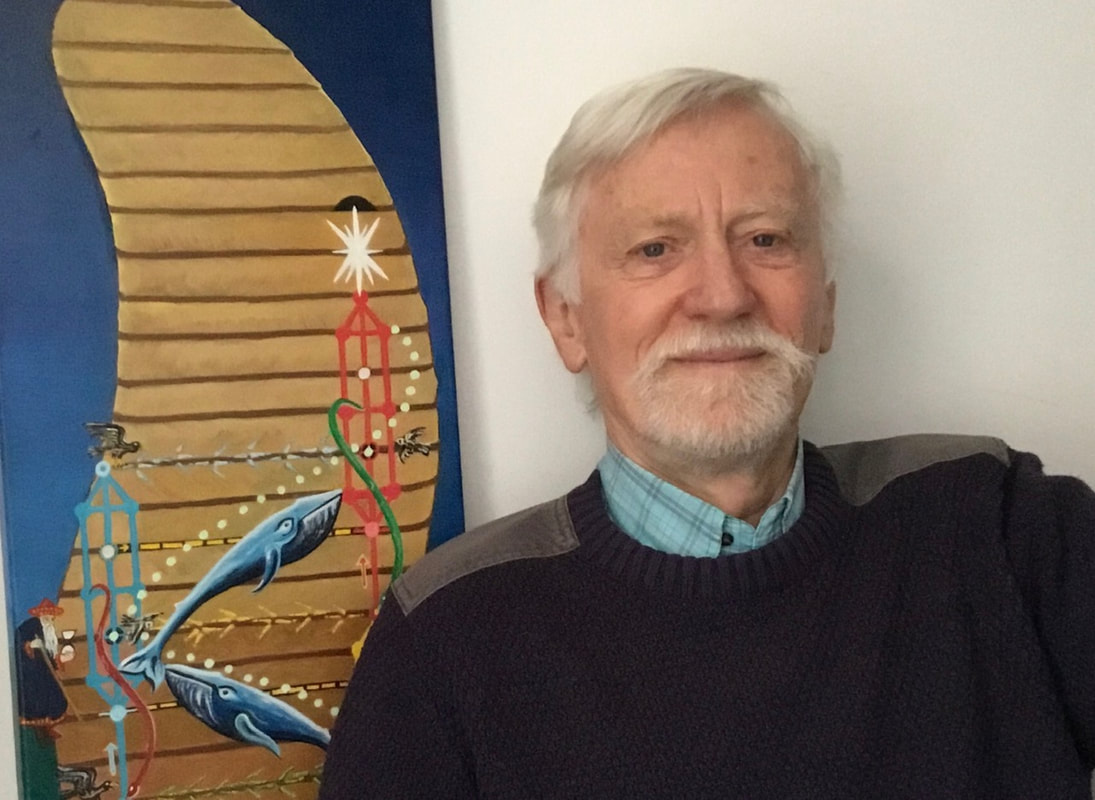

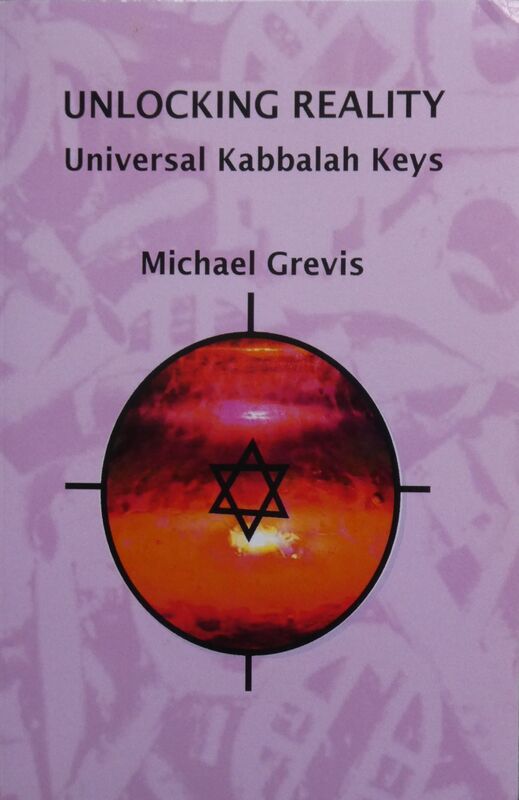




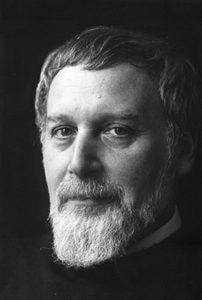

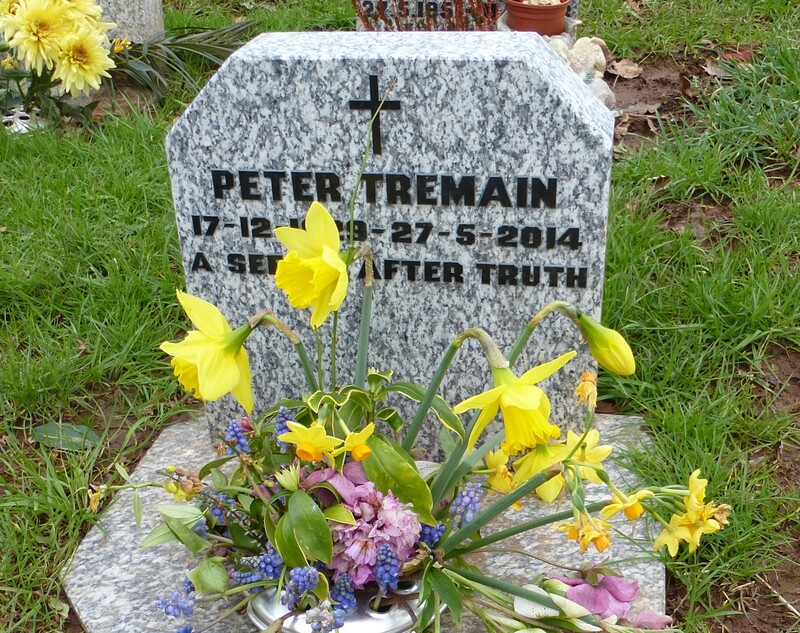
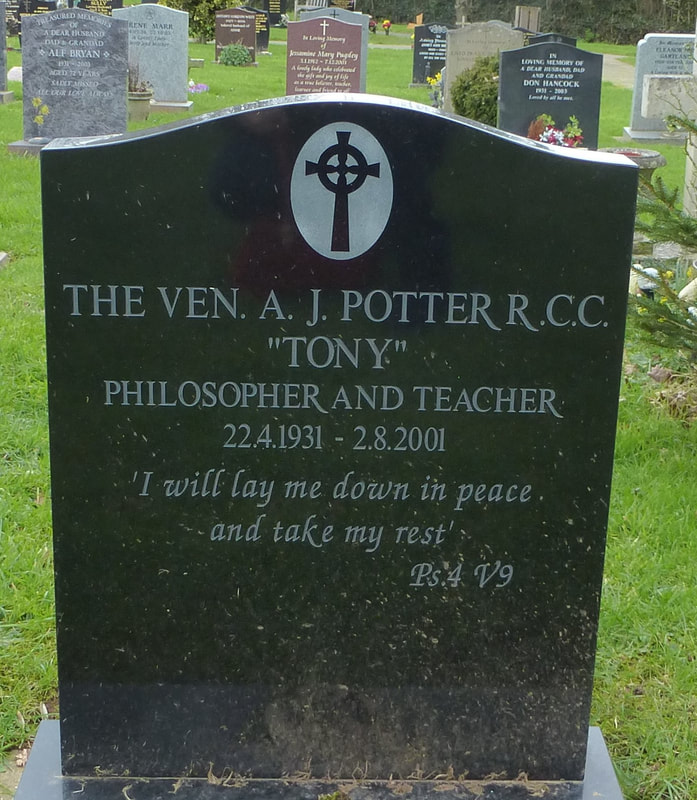

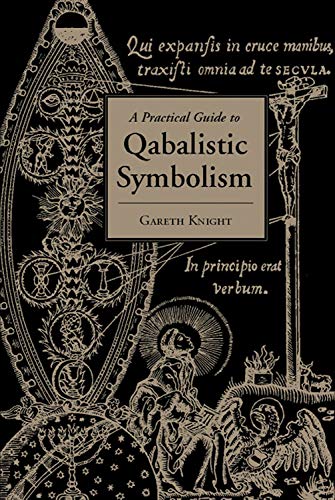





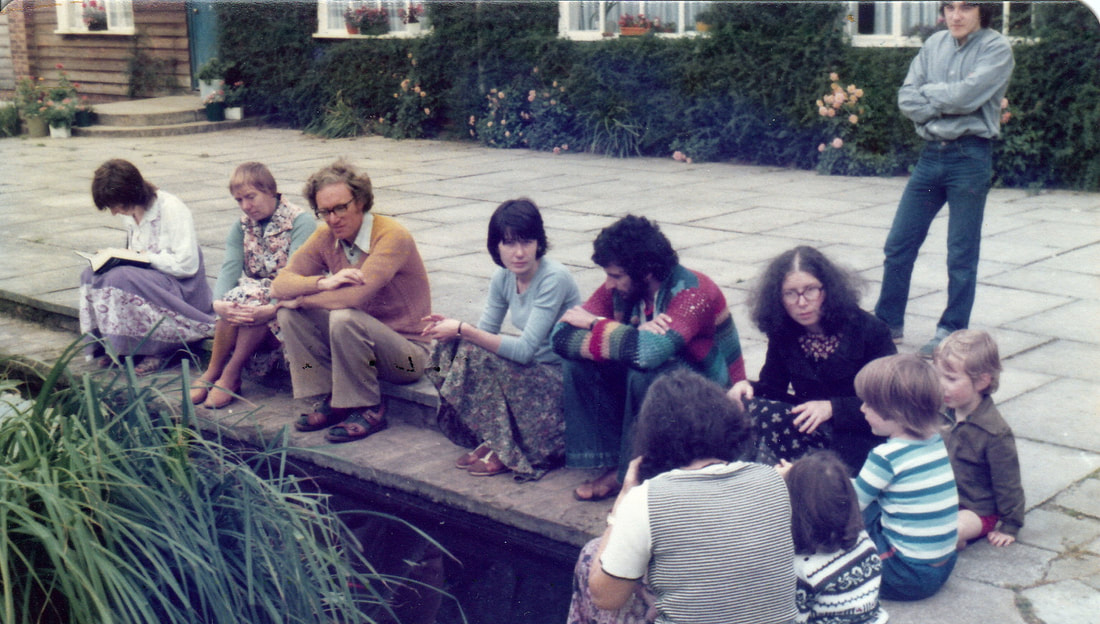
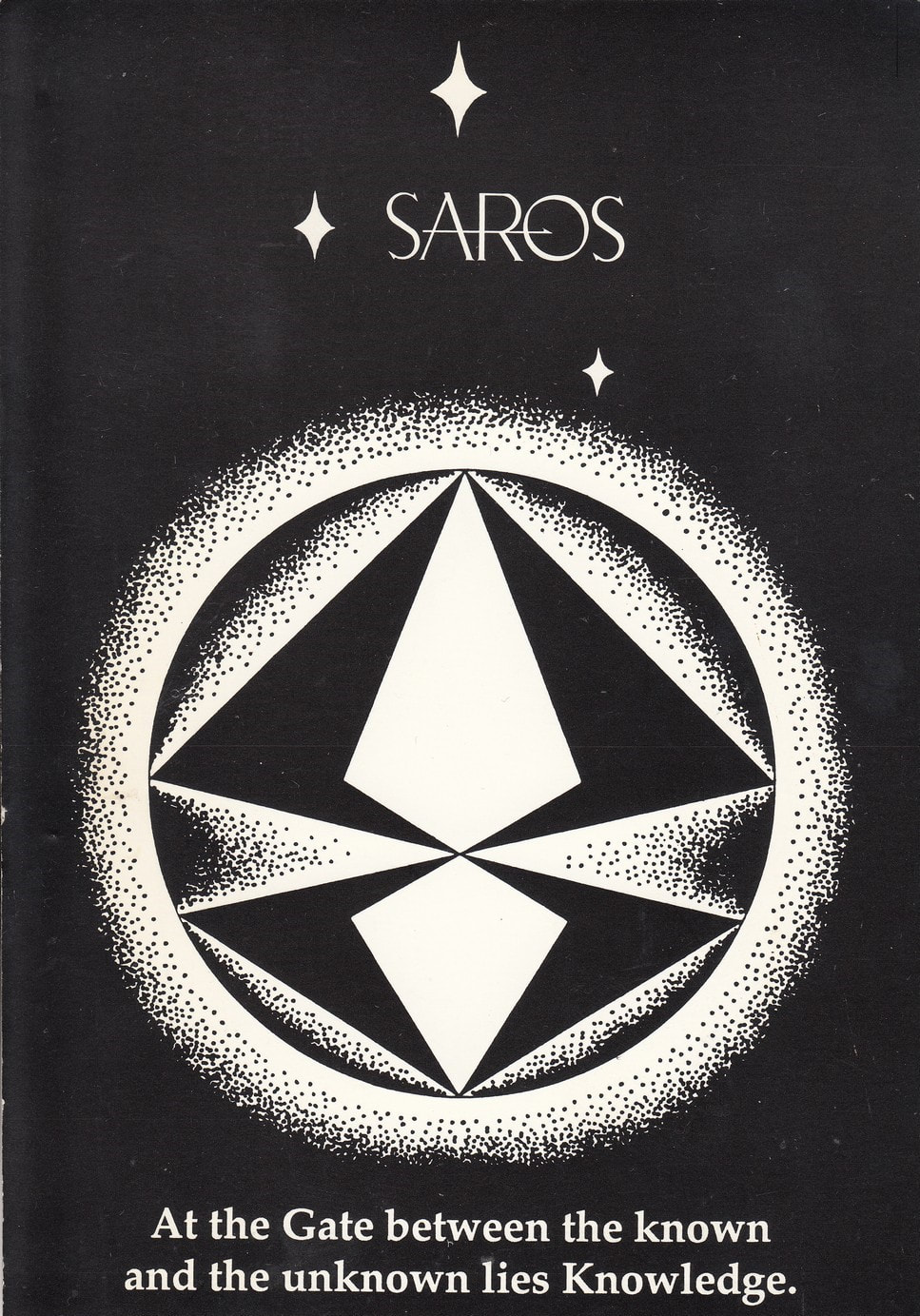

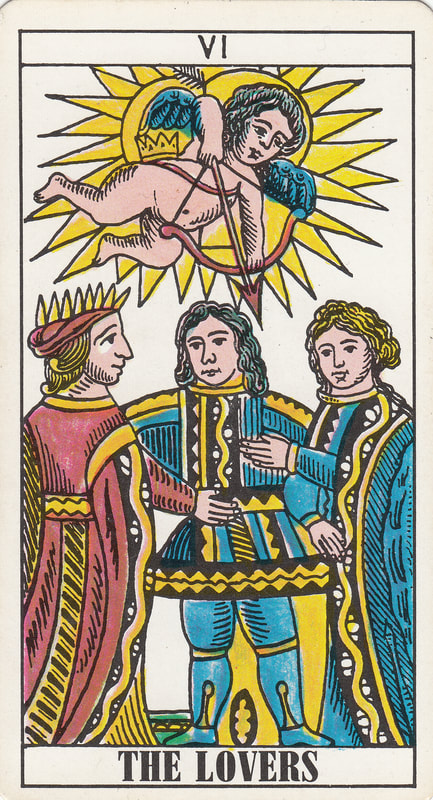

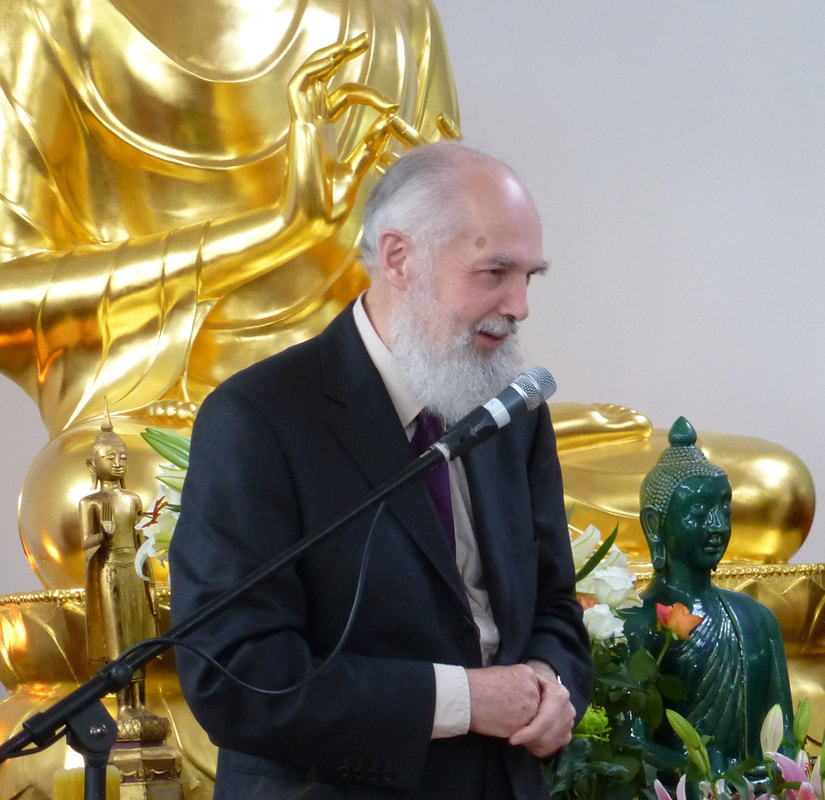
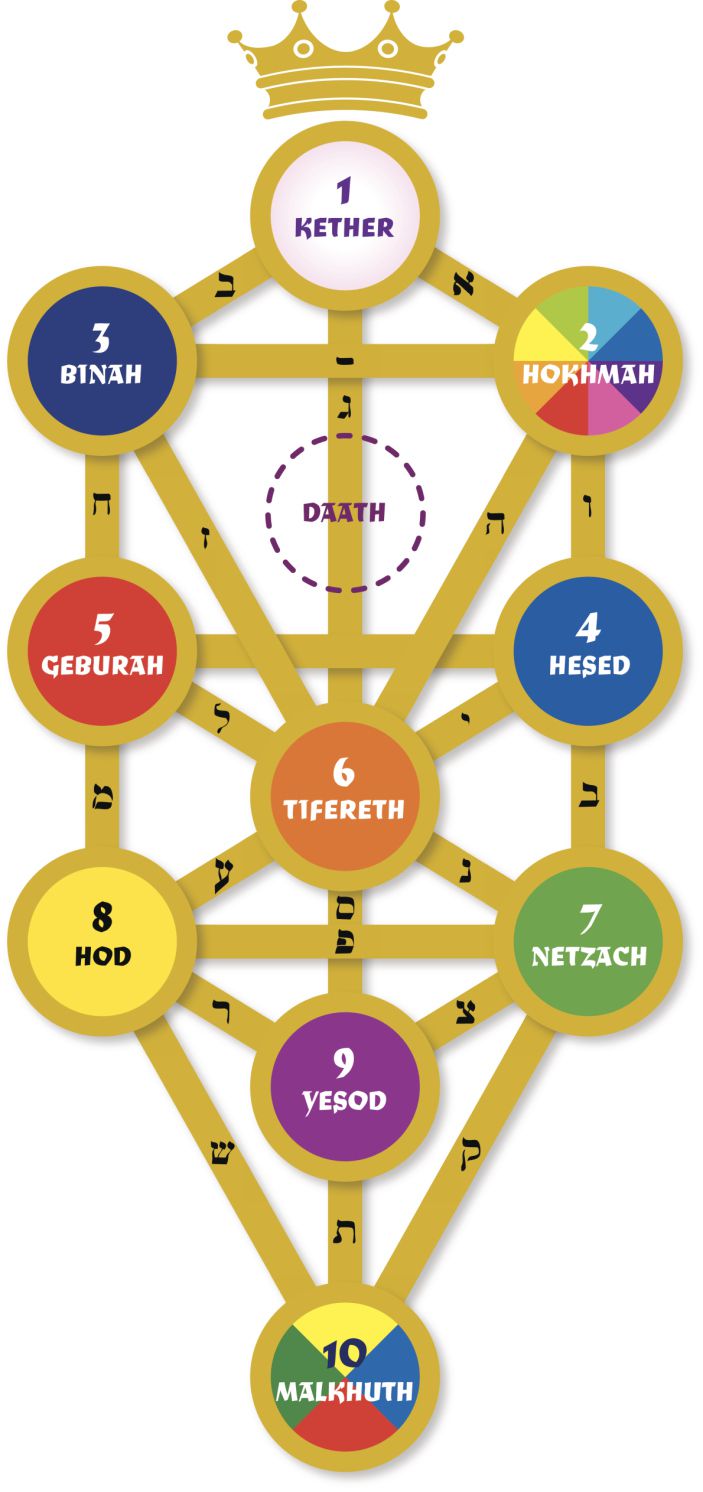

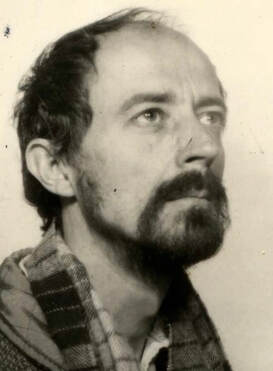
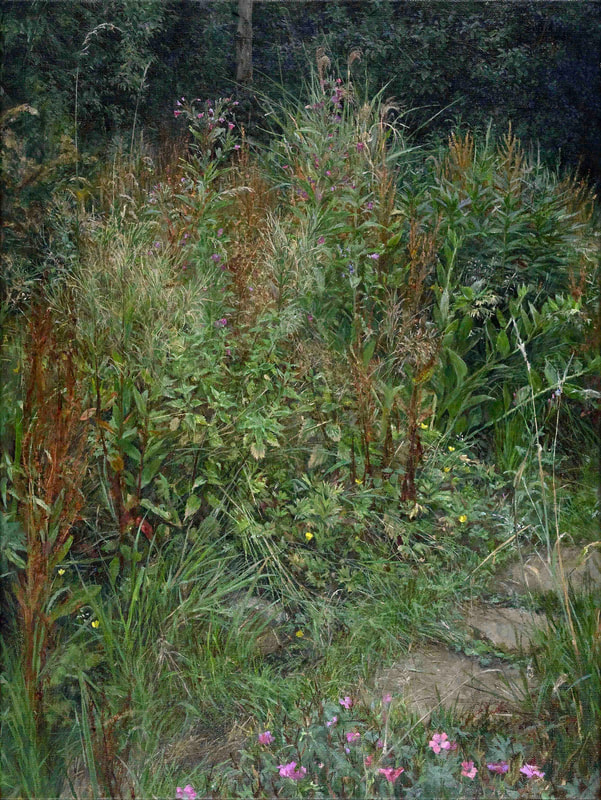
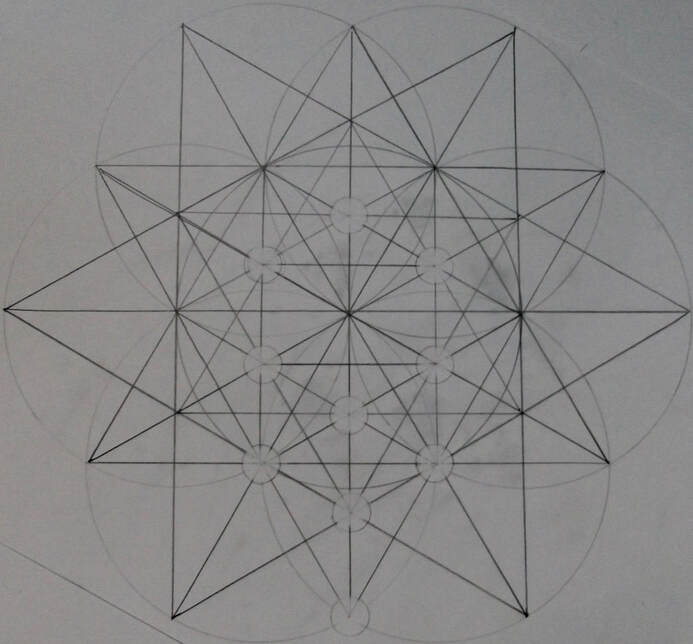





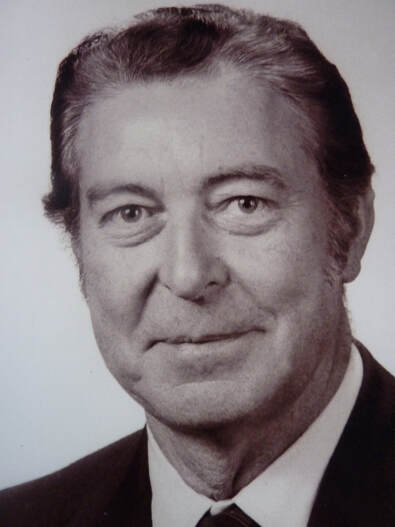
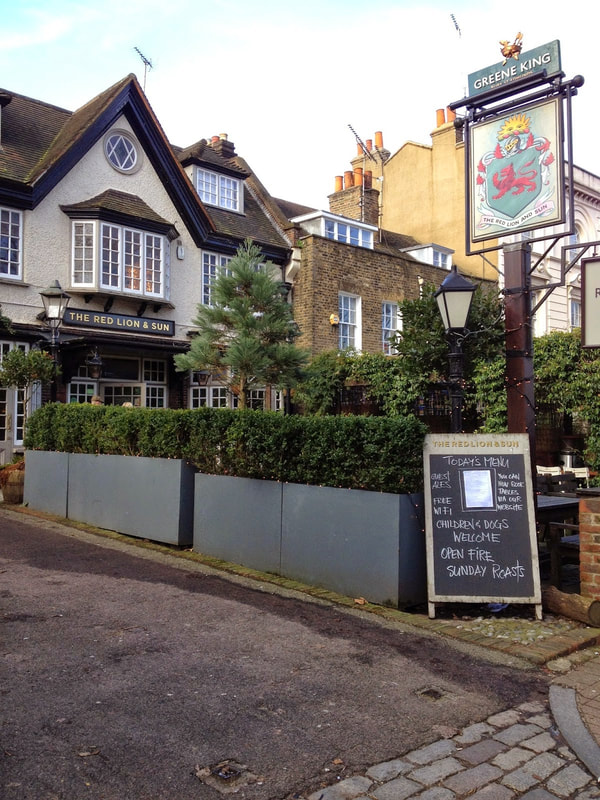







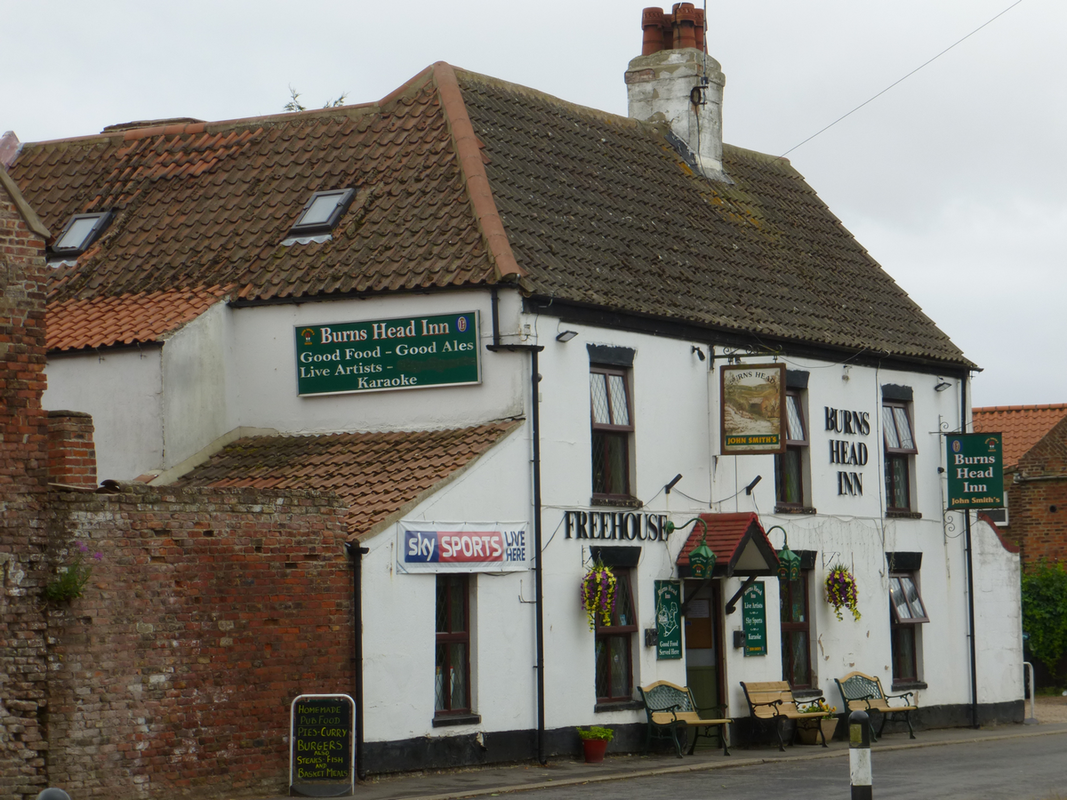




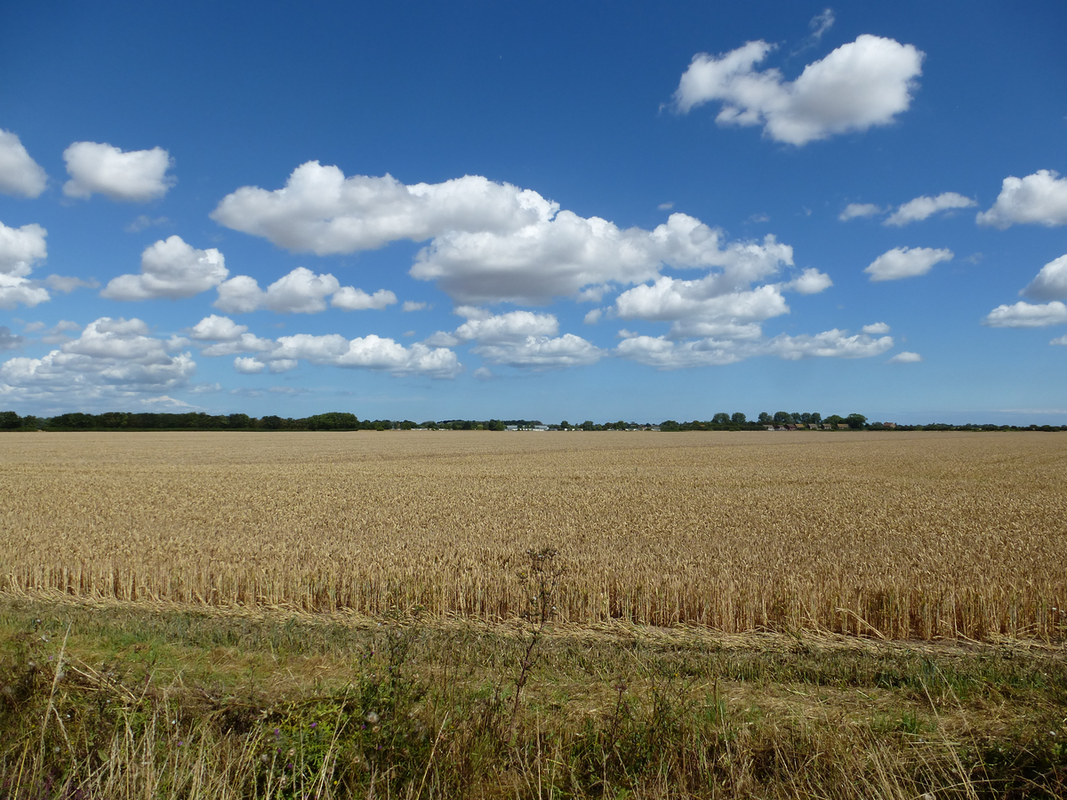
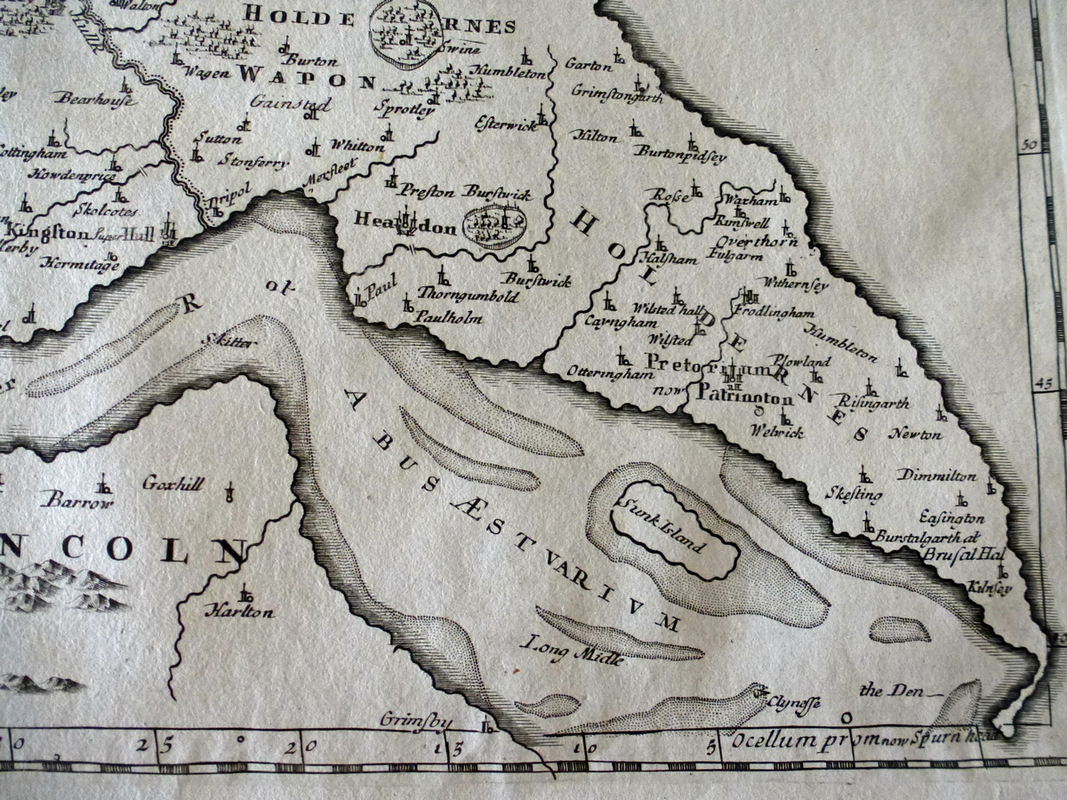
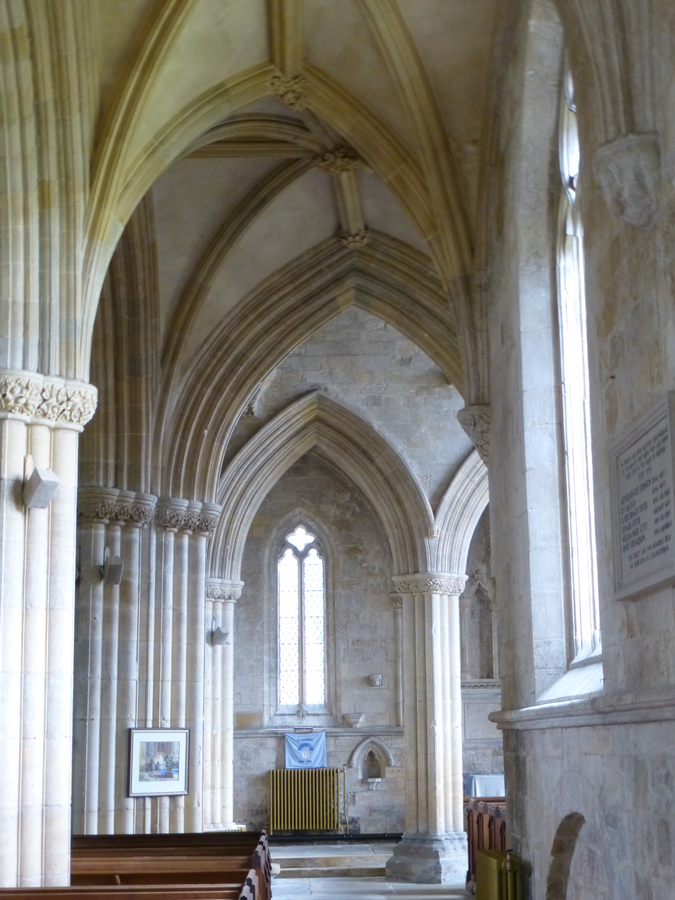
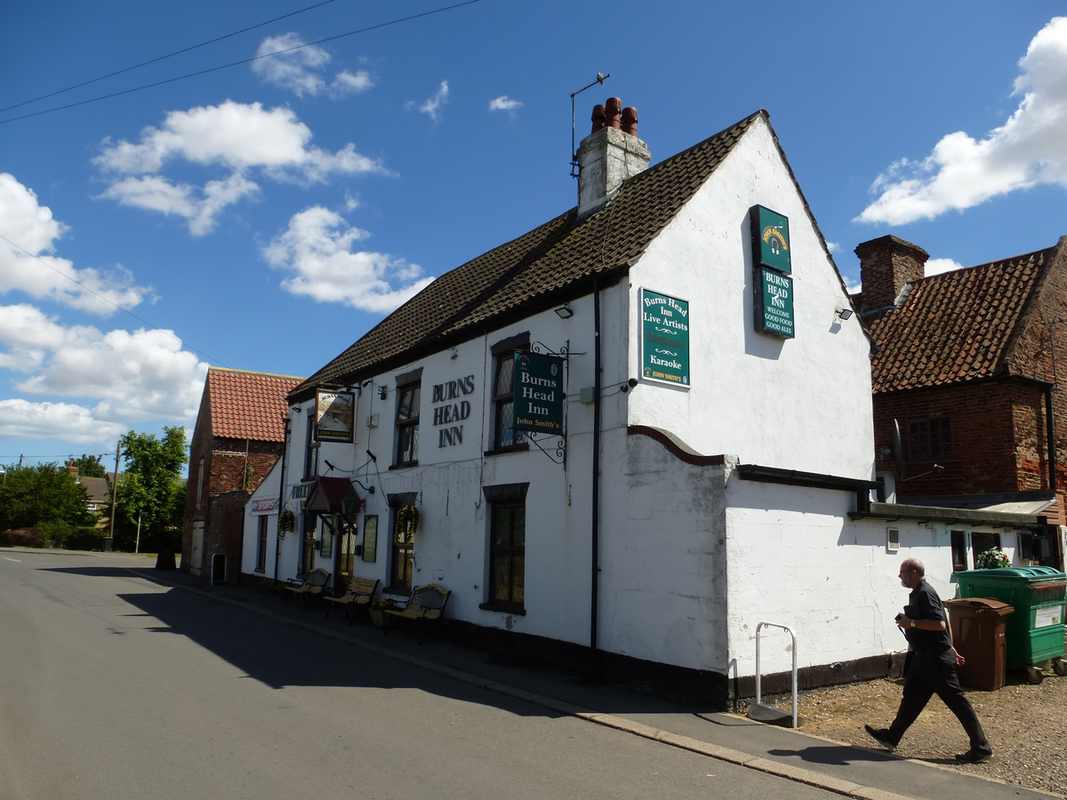

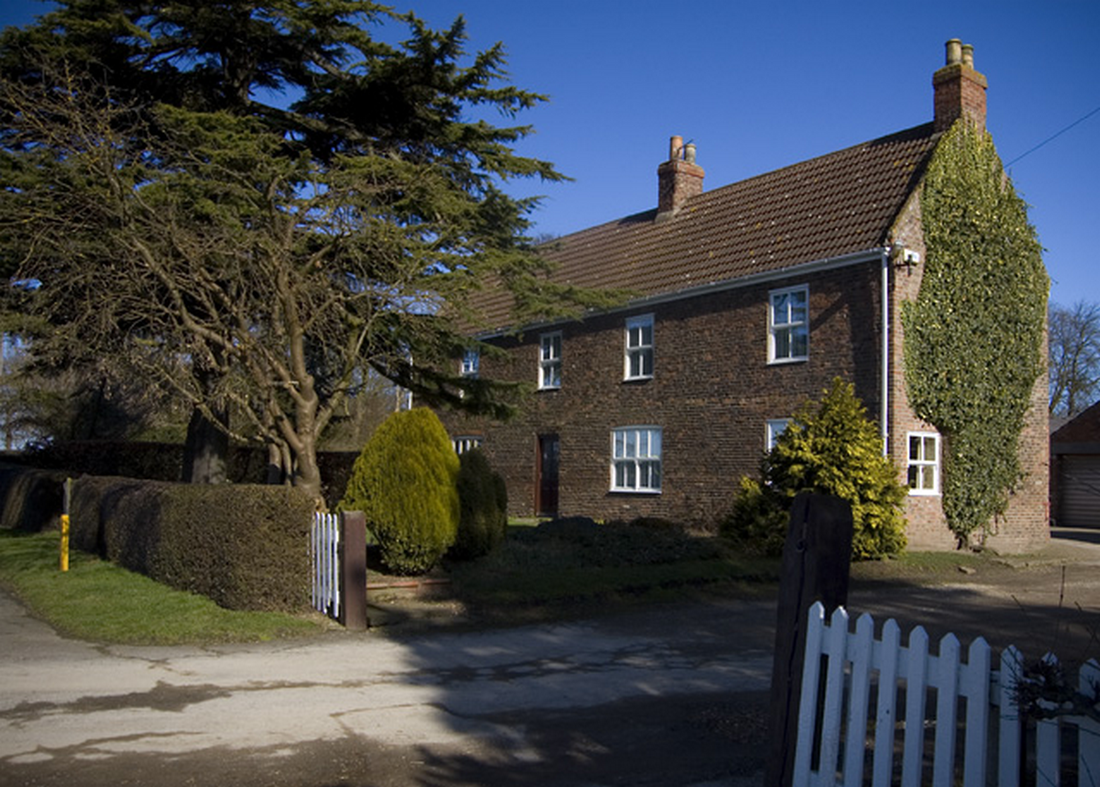






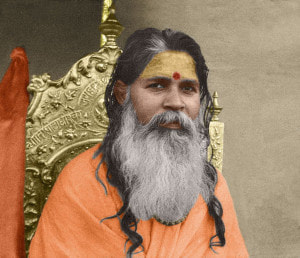
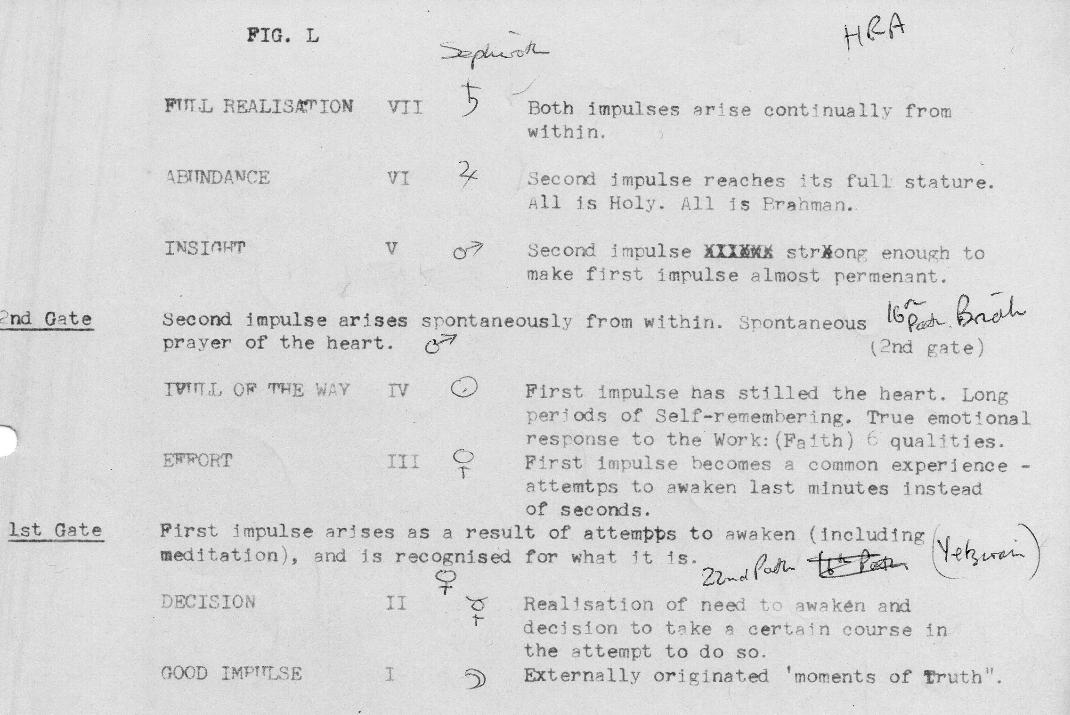

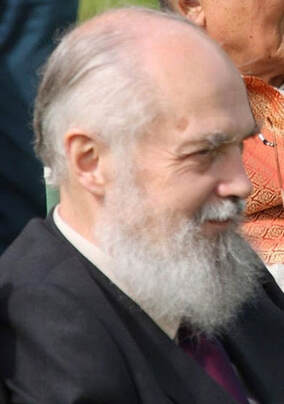

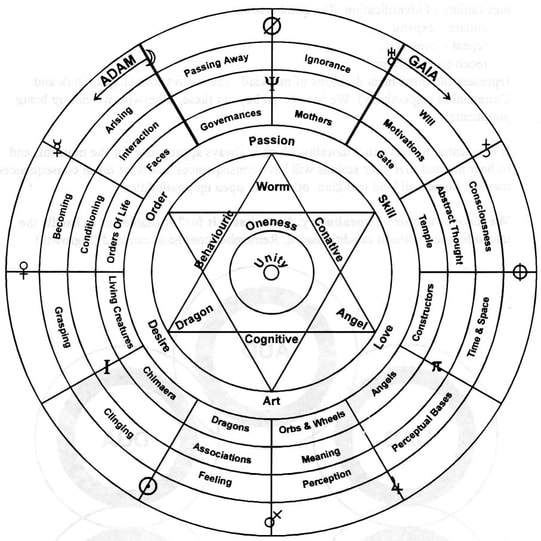

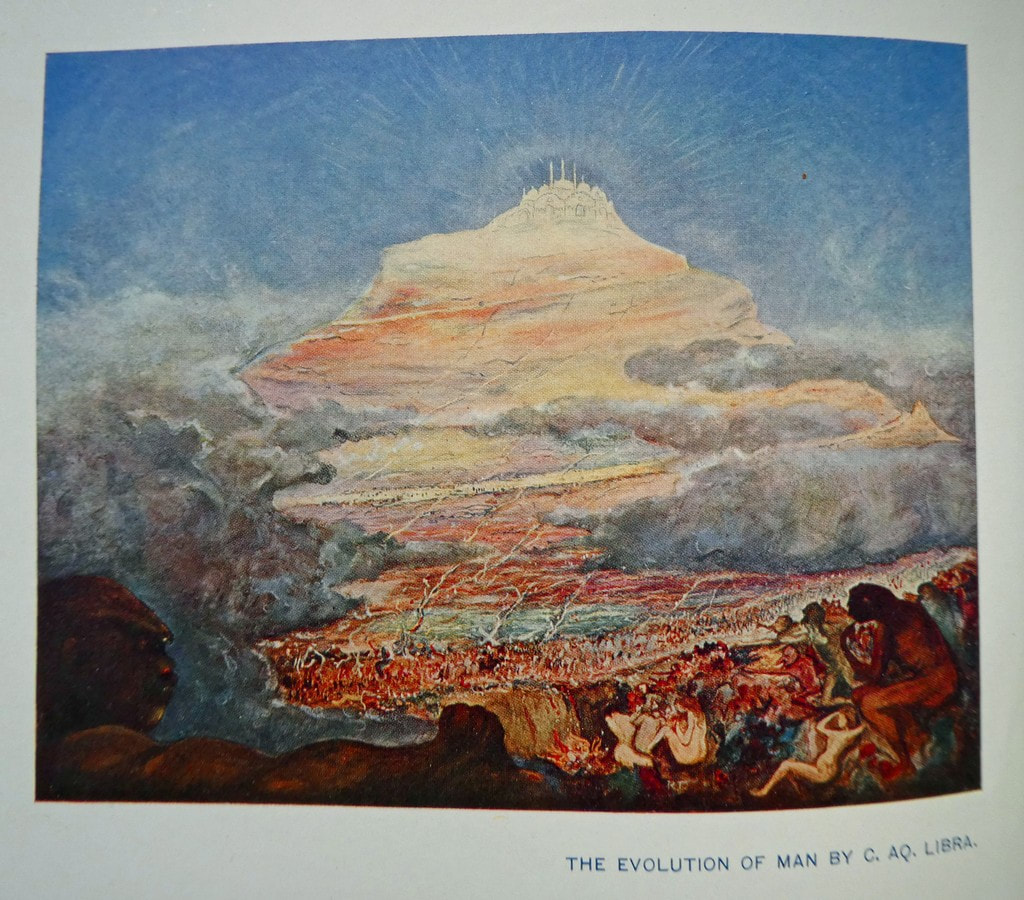



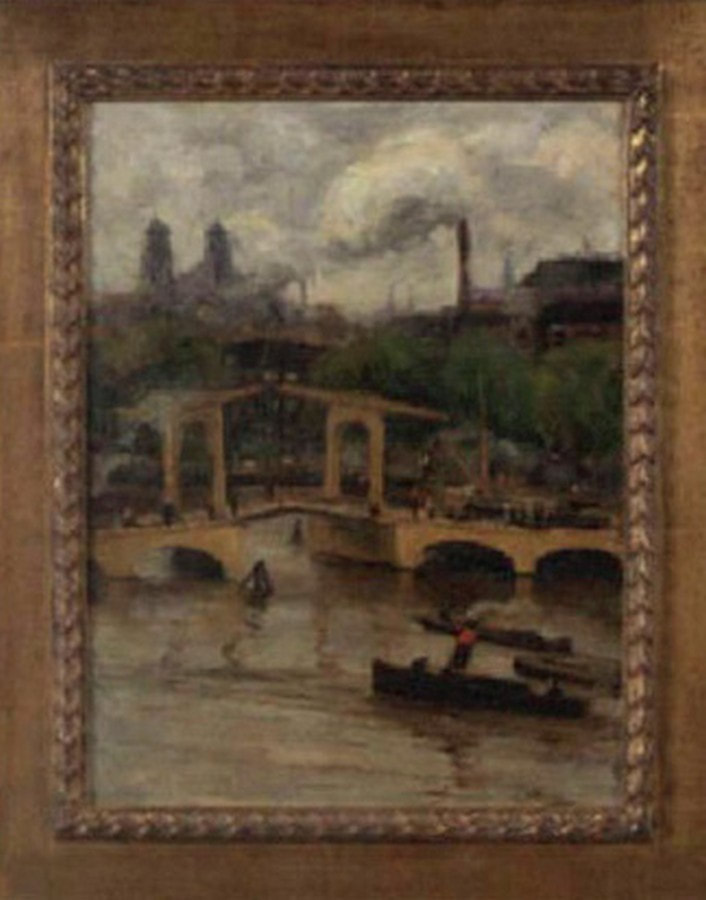
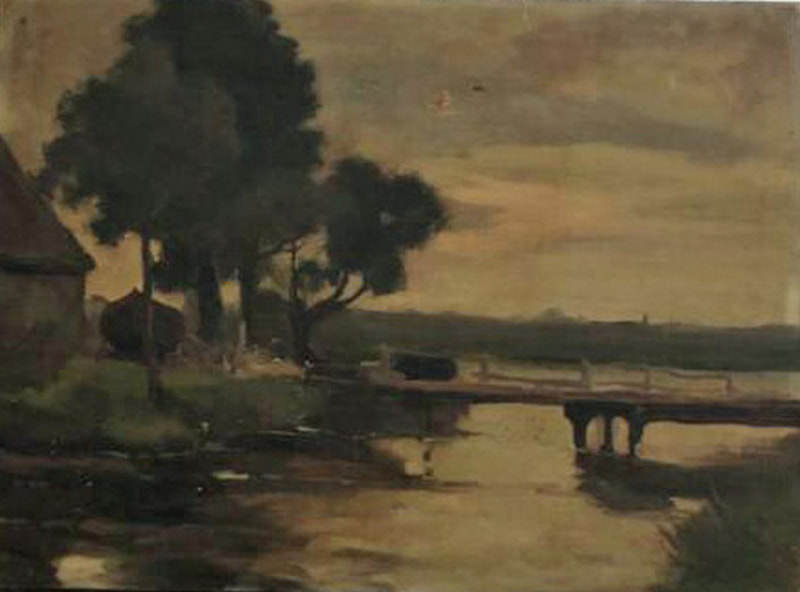
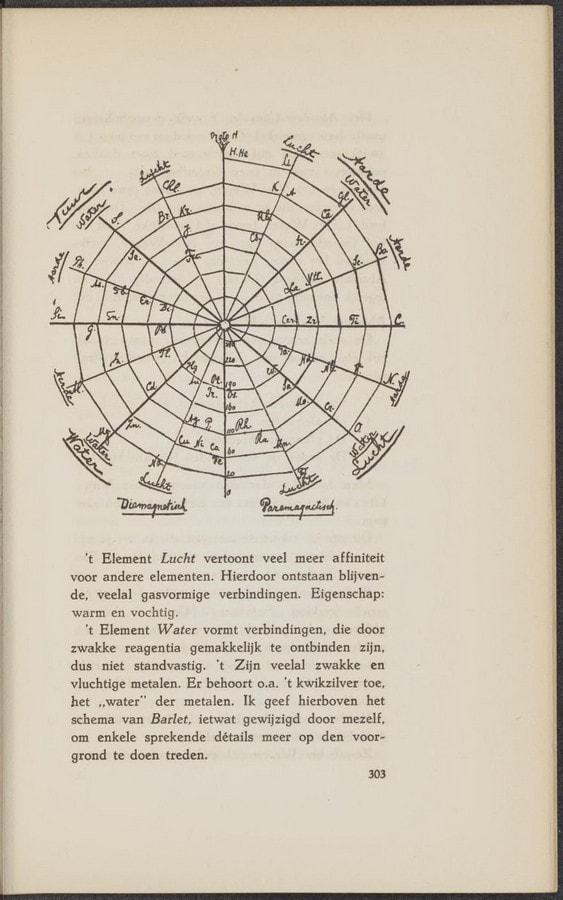

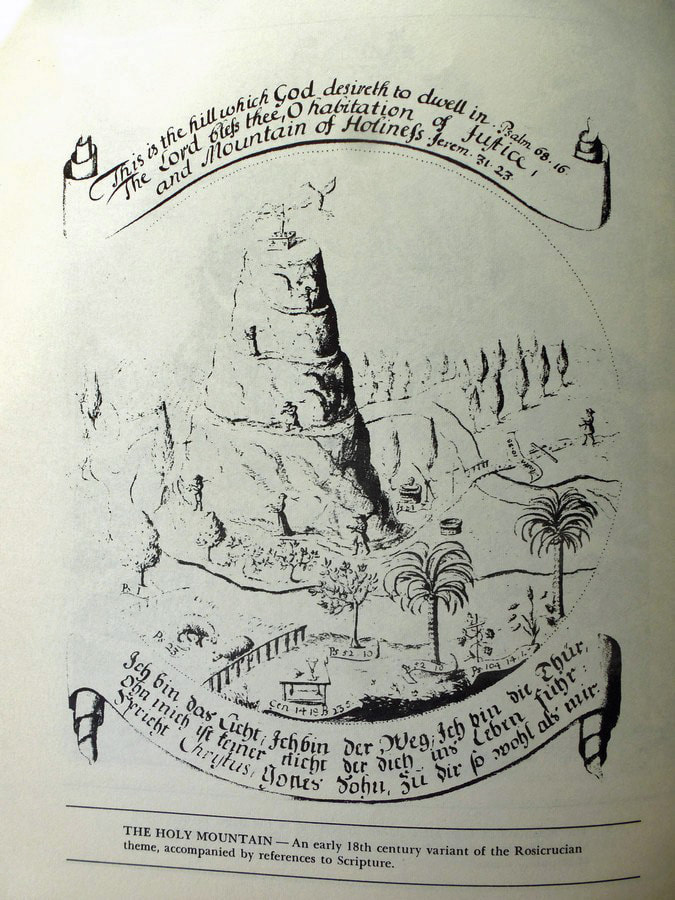


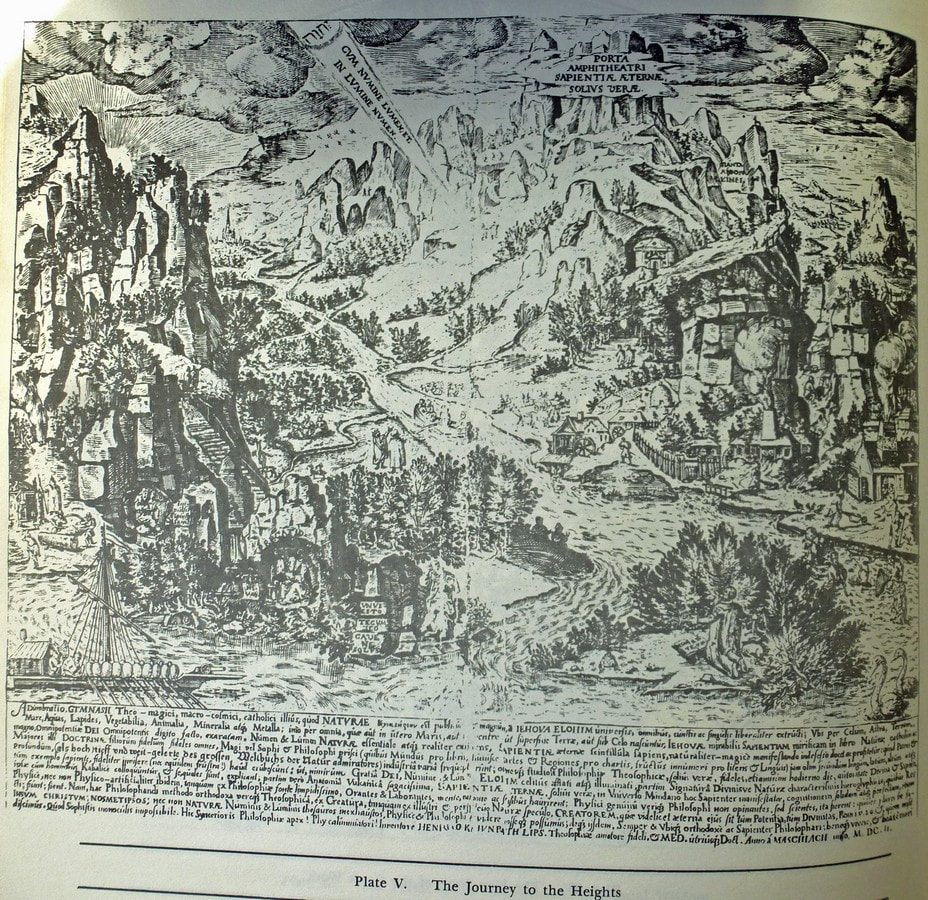

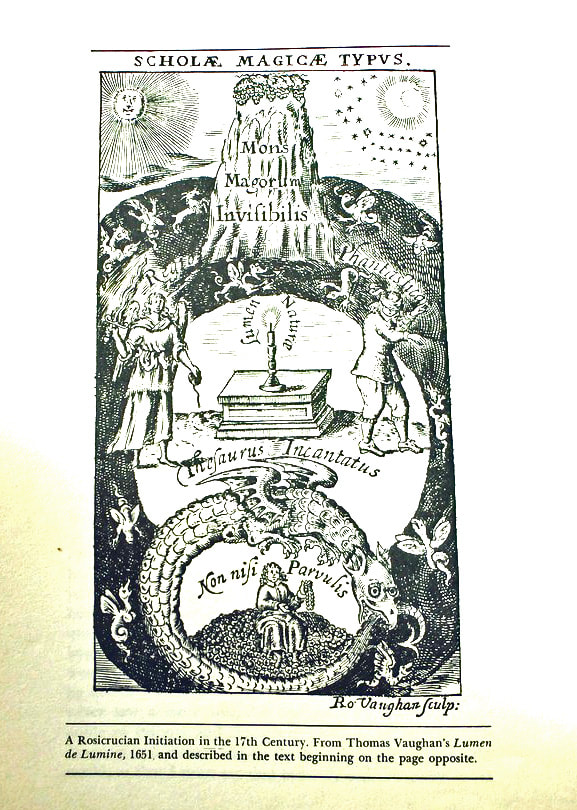
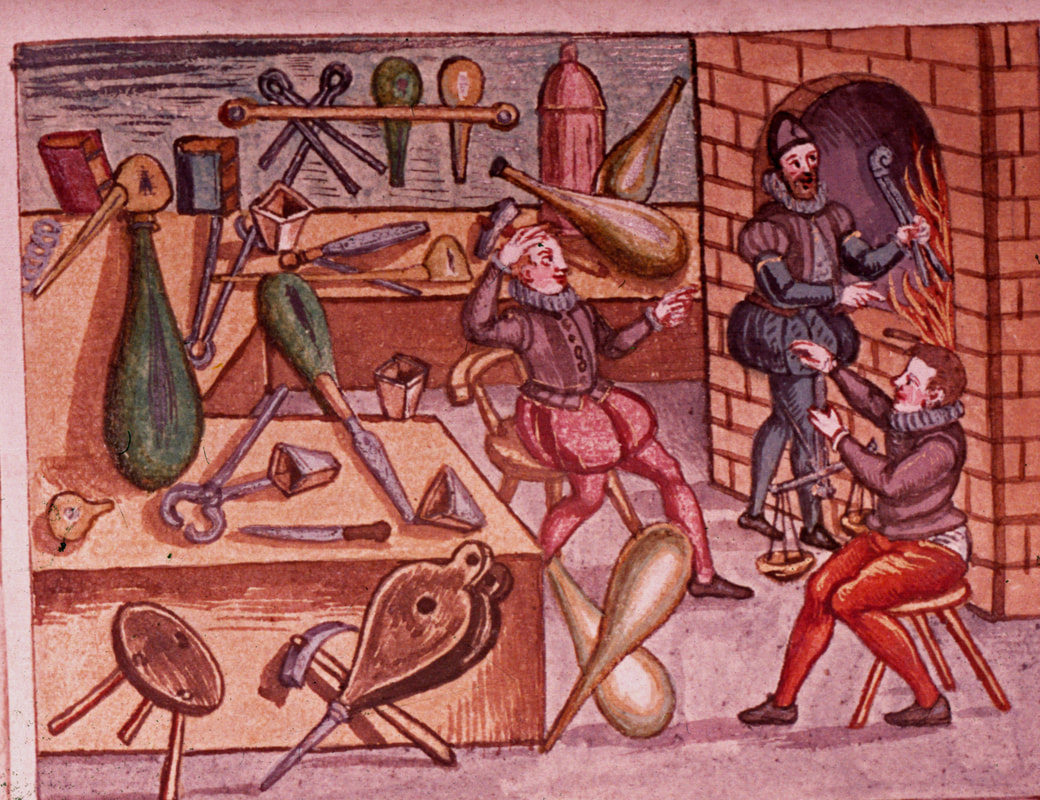

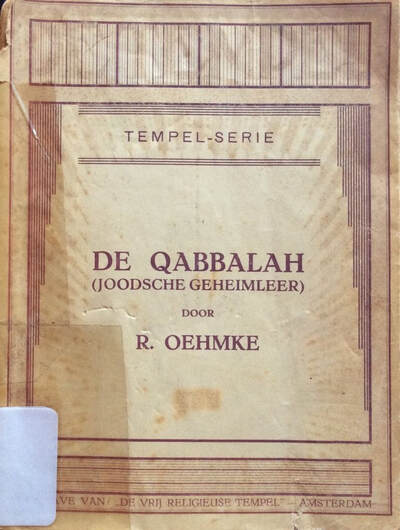



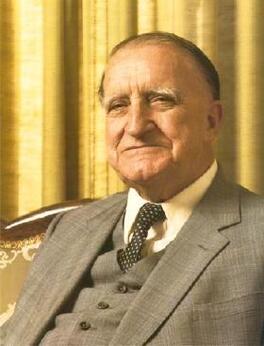

 RSS Feed
RSS Feed